Transforming an outdoor area into a vibrant oasis is a rewarding endeavor that enhances curb appeal and creates a personal sanctuary. Flower gardens offer an incredible spectrum of possibilities, from meticulously planned formal designs to whimsical, free-flowing wildflower meadows. Whether you have a sprawling backyard, a cozy patio, or just a sunny windowsill, there's a perfect floral concept waiting to be brought to life. Exploring different styles, color palettes, and planting techniques can unlock your garden's full potential, turning a simple patch of land into a breathtaking display of nature's beauty that evolves with the seasons.
1. English Cottage Flower Garden
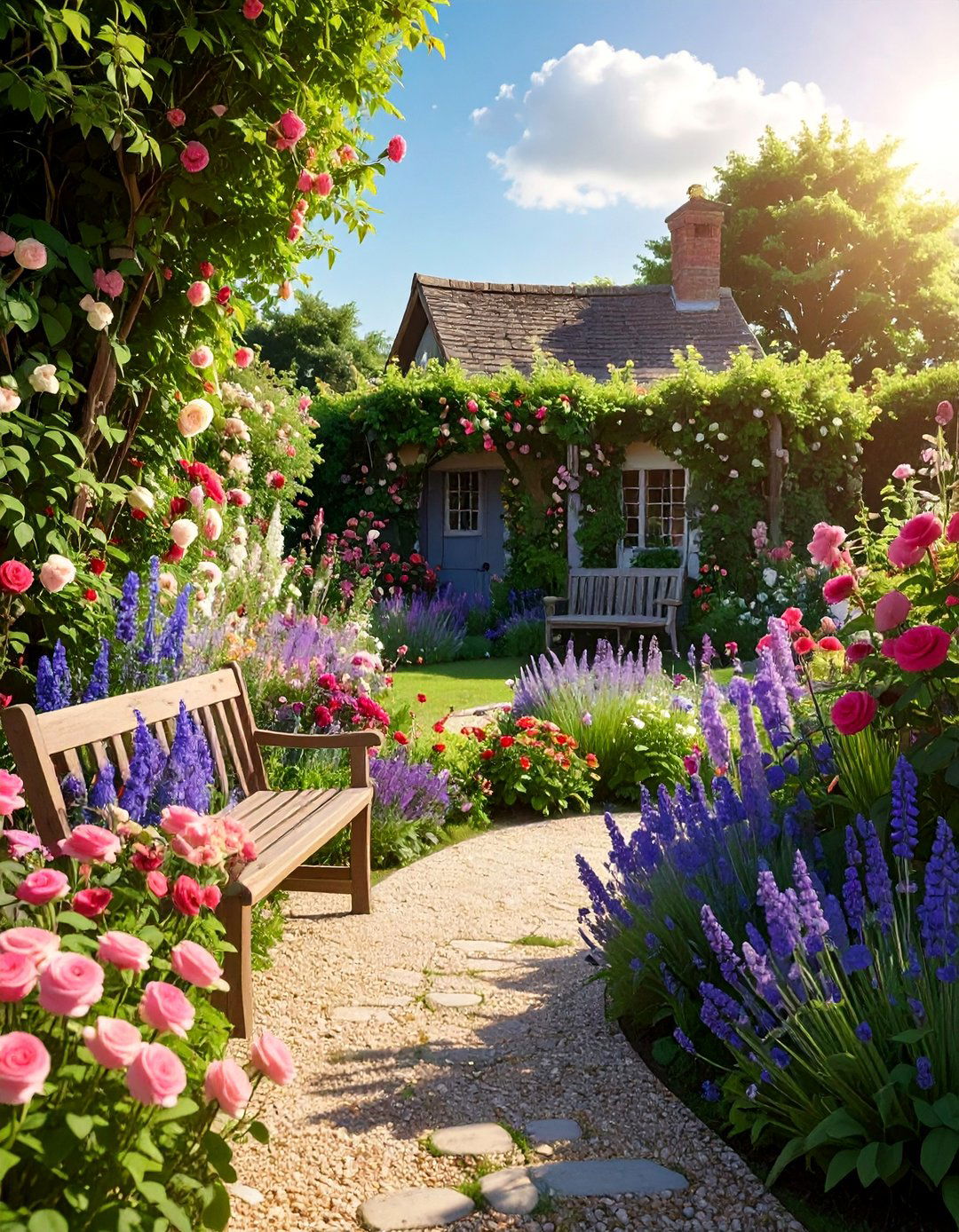
An English cottage flower garden embraces a charming, informal design characterized by a dense profusion of plants. This style blends ornamental flowers with edible herbs and vegetables, creating a functional and beautiful space. Traditional choices include classic roses, delphiniums, lavender, and hollyhocks, all seemingly planted in a casual, overflowing manner. Winding pathways, often made of brick or gravel, meander through the beds, inviting exploration. The key is to create a look of effortless abundance, where colors and textures mix freely, evoking a sense of romantic nostalgia and rustic grace right in your own backyard.
2. Pollinator-Friendly Flower Garden
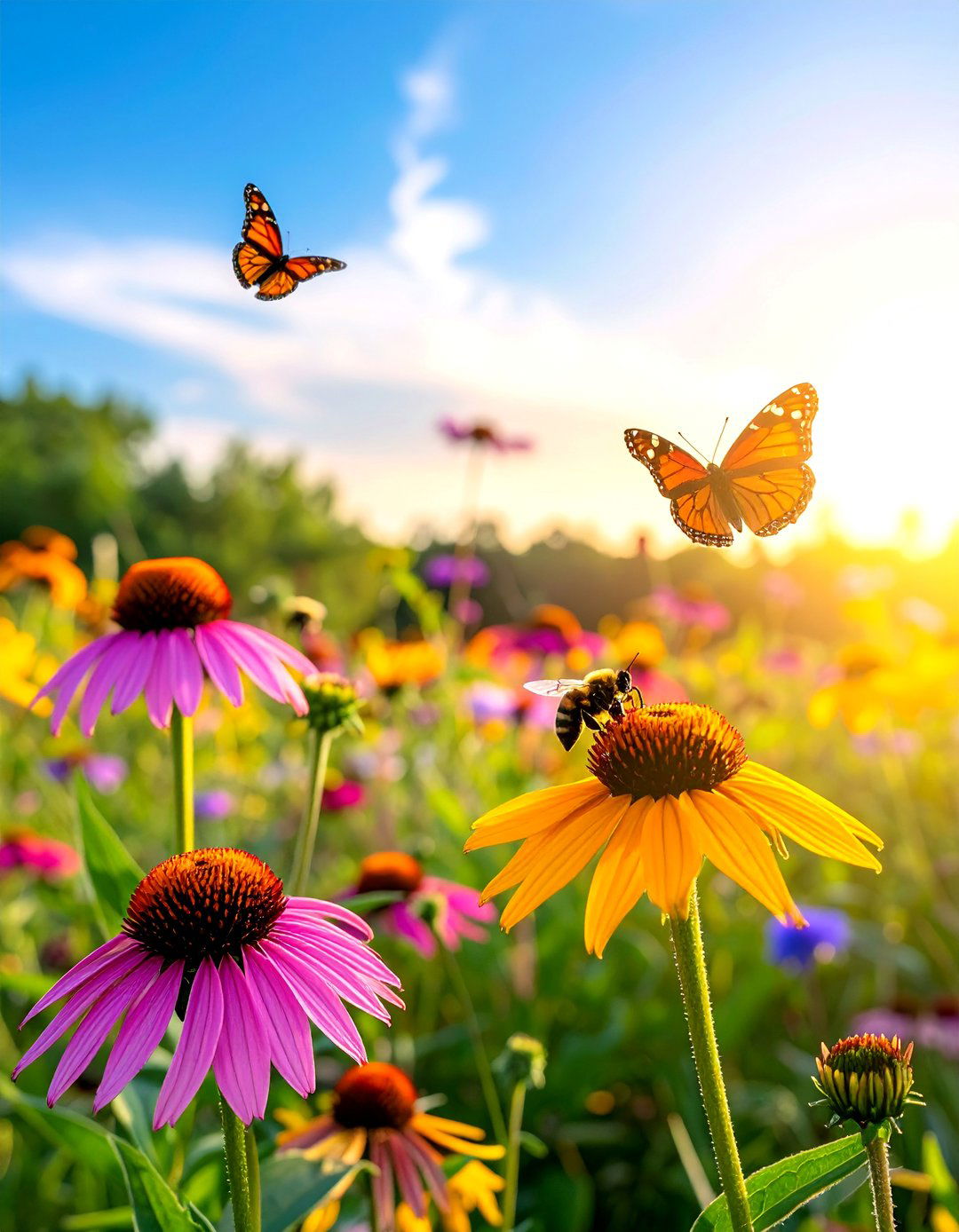
Creating a pollinator-friendly flower garden is a wonderful way to support local ecosystems while enjoying a lively, buzzing outdoor space. This garden focuses on nectar-rich and pollen-heavy blooms that attract bees, butterflies, hummingbirds, and other beneficial insects. Plant a diverse selection of native flowers like coneflowers, bee balm, milkweed, and salvia, ensuring you have something blooming from early spring to late fall. By providing a continuous food source, you not only help these crucial creatures thrive but also benefit from better pollination for any nearby fruits and vegetables, resulting in a vibrant, dynamic garden.
3. Raised Bed Flower Garden
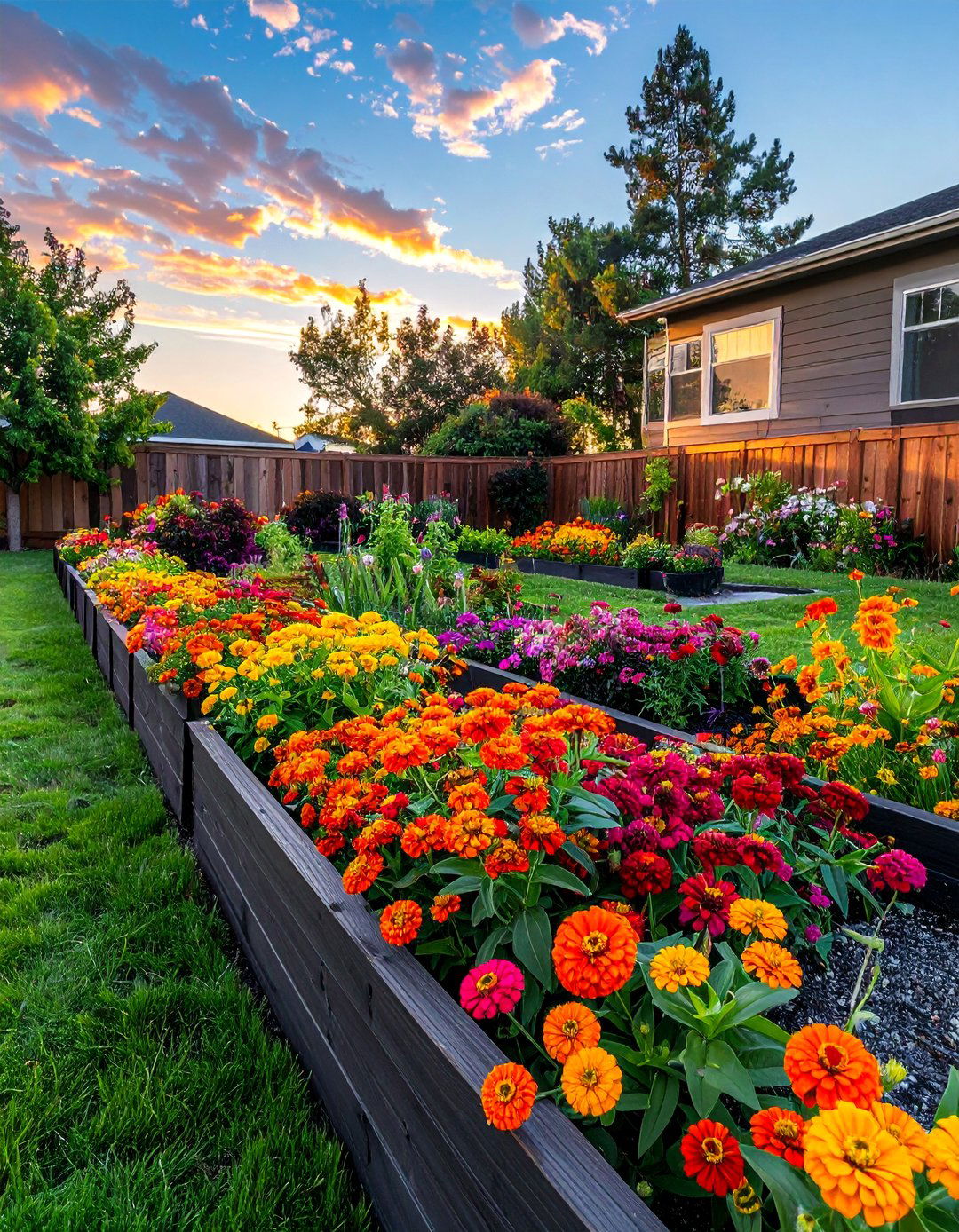
A raised bed flower garden offers numerous practical advantages, making it an excellent choice for gardeners of all skill levels. By elevating the planting area, you gain superior control over soil quality, which is ideal for growing specific types of flowers that require particular conditions. This design also improves drainage and can reduce back strain, as less bending is required for planting and maintenance. Raised beds, constructed from wood, stone, or metal, create clean, defined lines that add a structured, organized look to your landscape while allowing for dense, beautiful floral arrangements within their contained borders.
4. Vertical Flower Garden
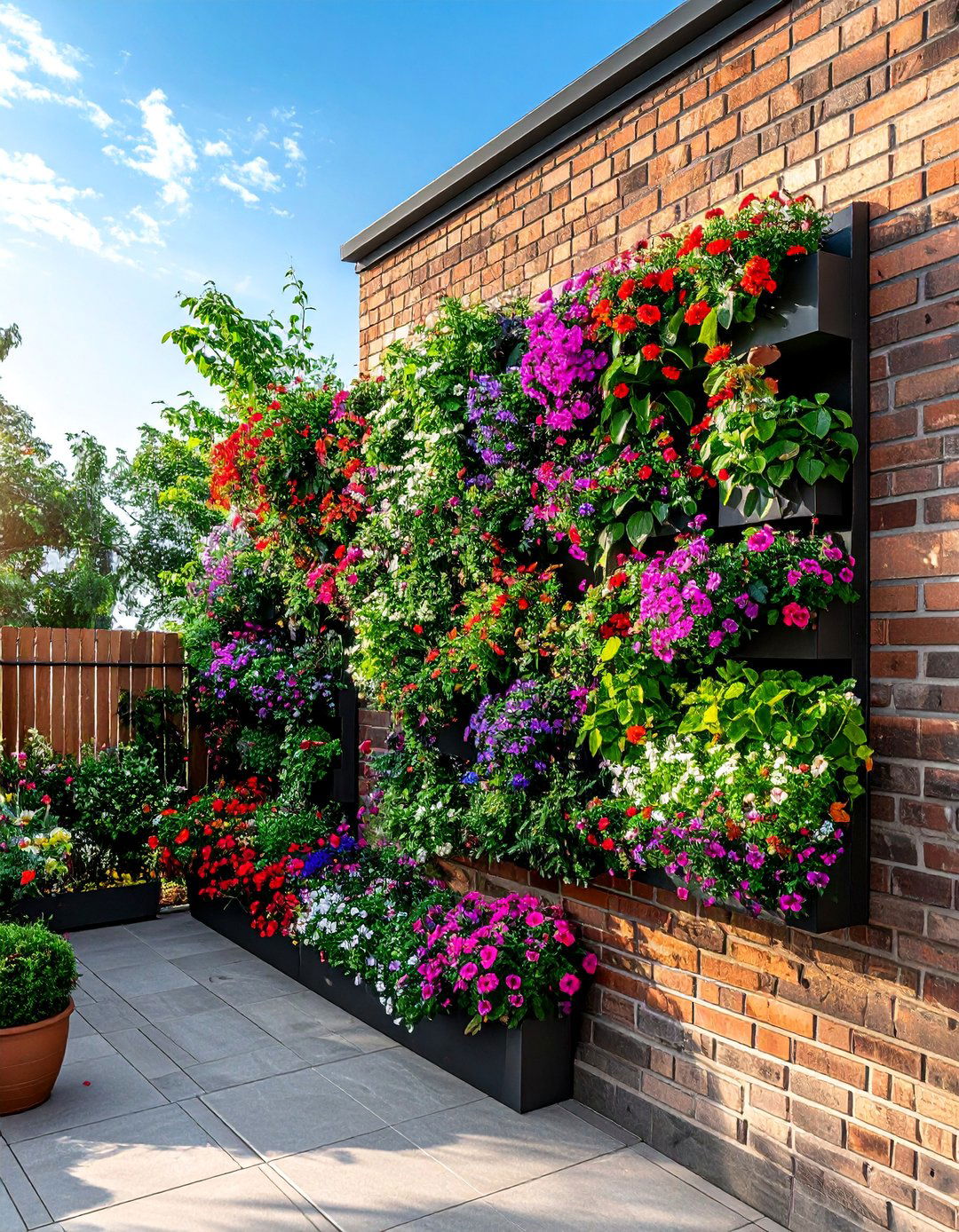
For those with limited ground space, a vertical flower garden is an ingenious solution that draws the eye upward. This approach utilizes walls, fences, or trellises to create a living tapestry of color and texture. You can use hanging baskets, tiered planters, or specially designed wall-mounted pockets to cultivate a variety of trailing and climbing plants like petunias, ivy geraniums, and clematis. A vertical garden not only maximizes your growing area but also adds a stunning architectural element to patios, balconies, or any blank wall, turning an underutilized surface into a breathtaking floral feature.
5. Wildflower Meadow Garden
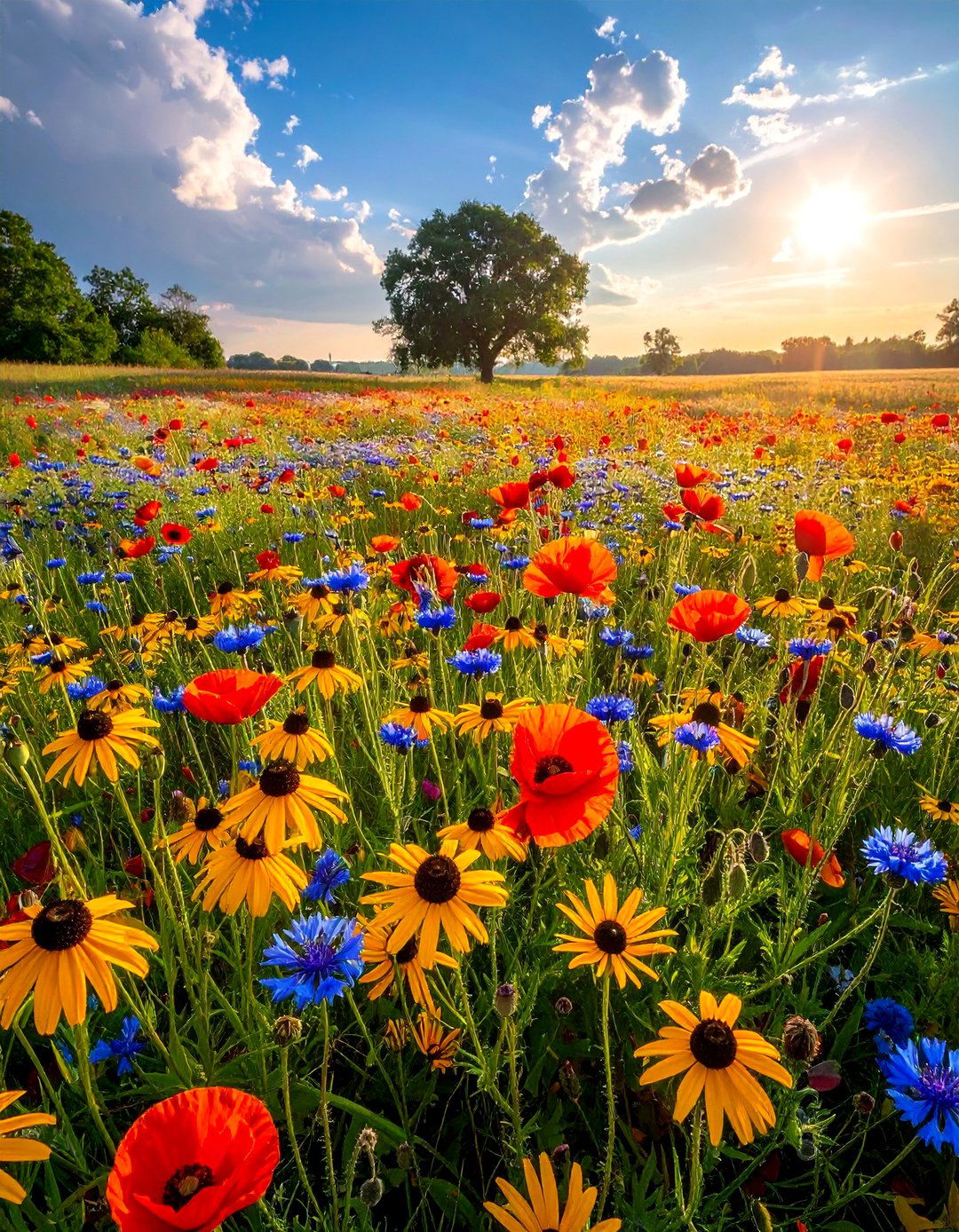
A wildflower meadow garden captures the untamed beauty of nature, offering a low-maintenance and eco-friendly alternative to a traditional lawn. This style involves sowing a mix of native perennial and annual wildflowers, such as poppies, cornflowers, and black-eyed Susans, to create a naturalistic, free-flowing landscape. Once established, a wildflower meadow requires minimal watering and no fertilizing, and it provides a vital habitat for local wildlife, including pollinators and birds. It’s a perfect way to embrace a more relaxed gardening aesthetic while fostering biodiversity and enjoying a constantly changing display of seasonal color.
6. Monochromatic Flower Garden
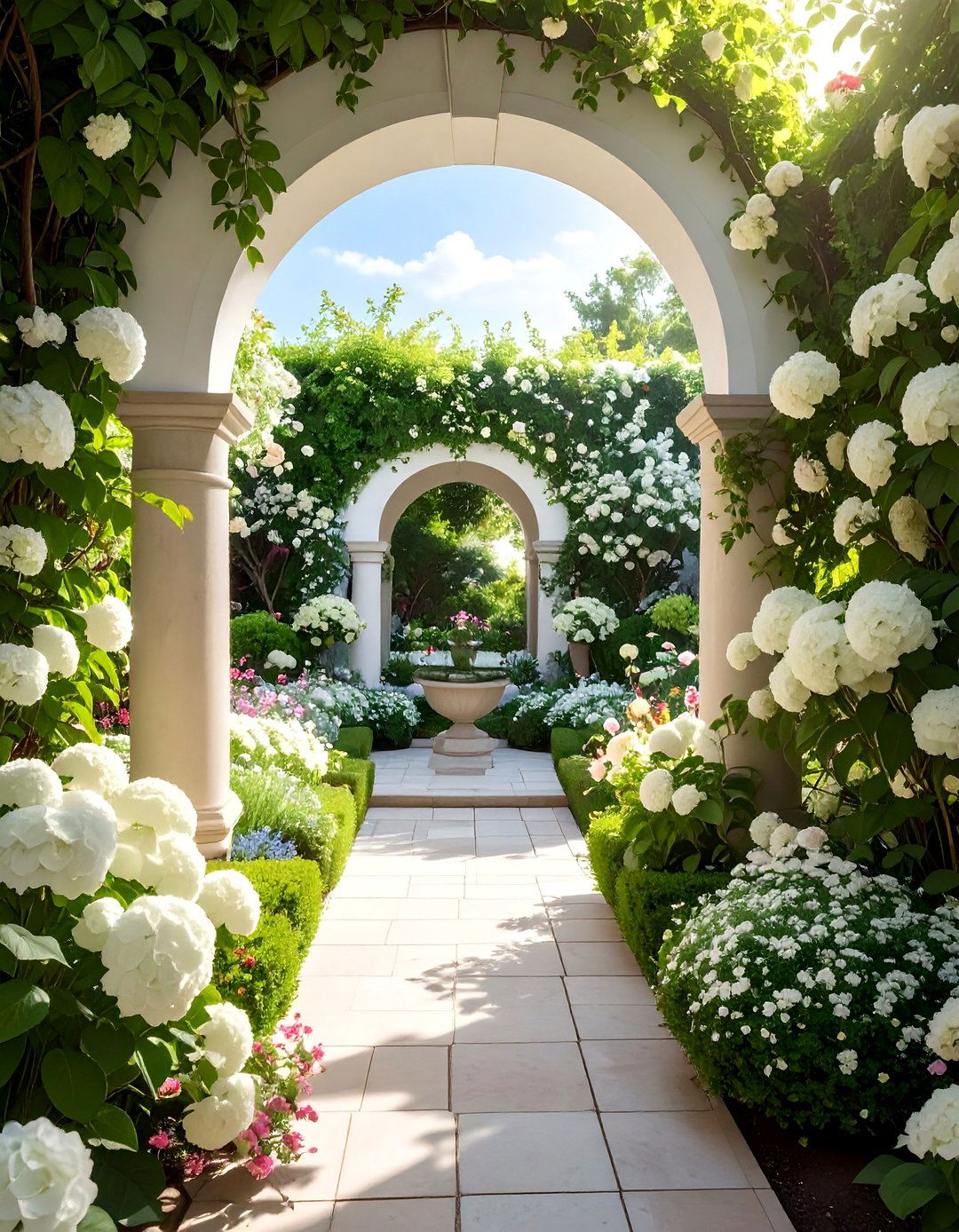
Designing a monochromatic flower garden creates a sophisticated and visually striking impact. This concept involves selecting flowers in various shades, tints, and tones of a single color. For example, a white garden might feature plants like hydrangeas, gardenias, and alyssum, creating a serene and elegant atmosphere that glows at twilight. Similarly, a garden focused on shades of purple or blue can evoke a sense of calm and depth. The key to success is to vary plant height, form, and texture to maintain interest and prevent the design from appearing flat, resulting in a cohesive and artfully curated display.
7. Container Flower Garden
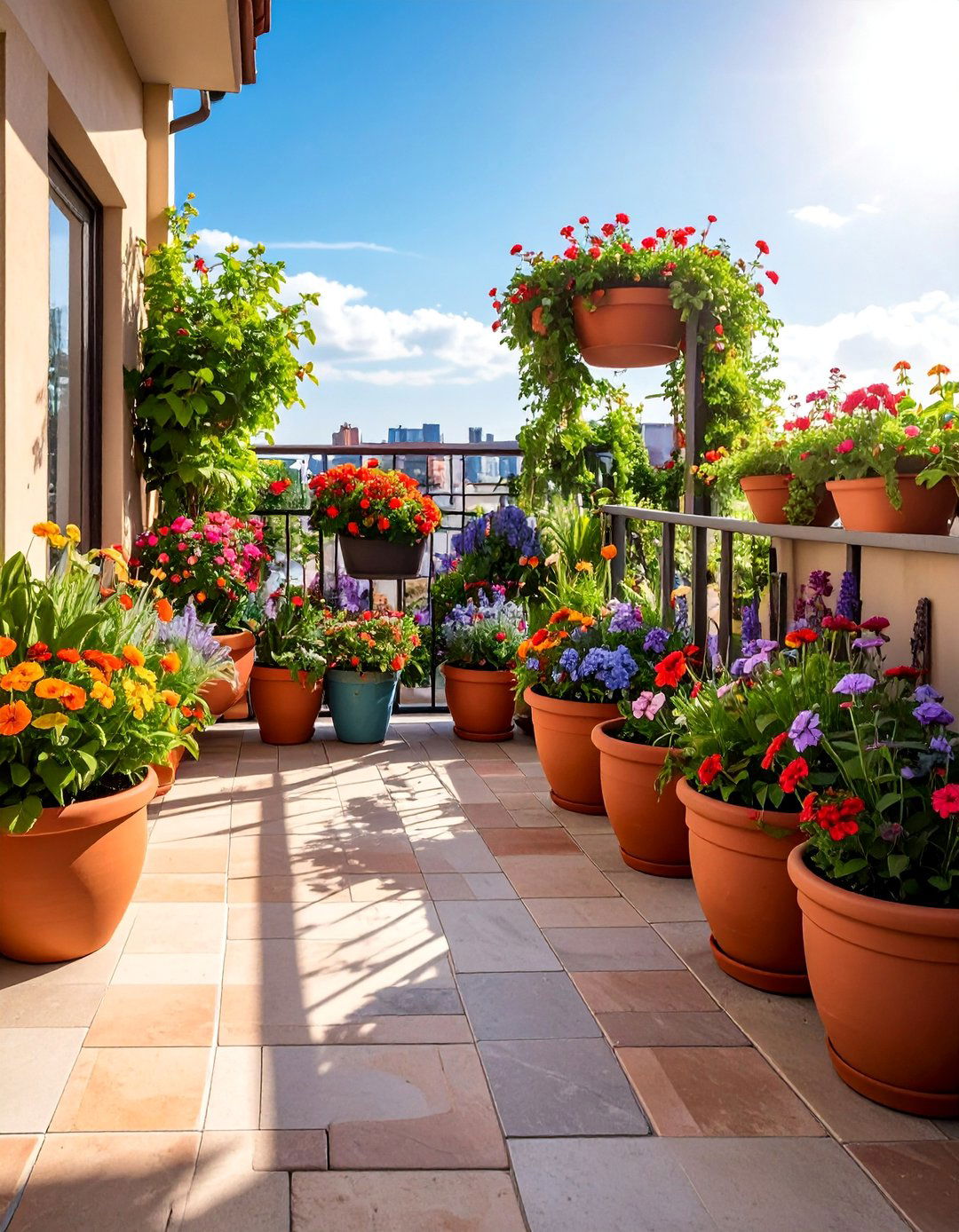
A container flower garden offers incredible versatility, allowing you to bring vibrant blooms to any space, regardless of size. Patios, balconies, front steps, and even windowsills can be transformed with a curated collection of pots, planters, and hanging baskets. This approach allows for complete control over soil and watering, making it easy to grow a diverse range of plants, from annuals like marigolds to perennials like lavender. You can easily rearrange containers to refresh the look or move them to optimize sun exposure. It's a flexible and accessible way to experiment with color combinations and plant varieties.
8. Cut Flower Garden
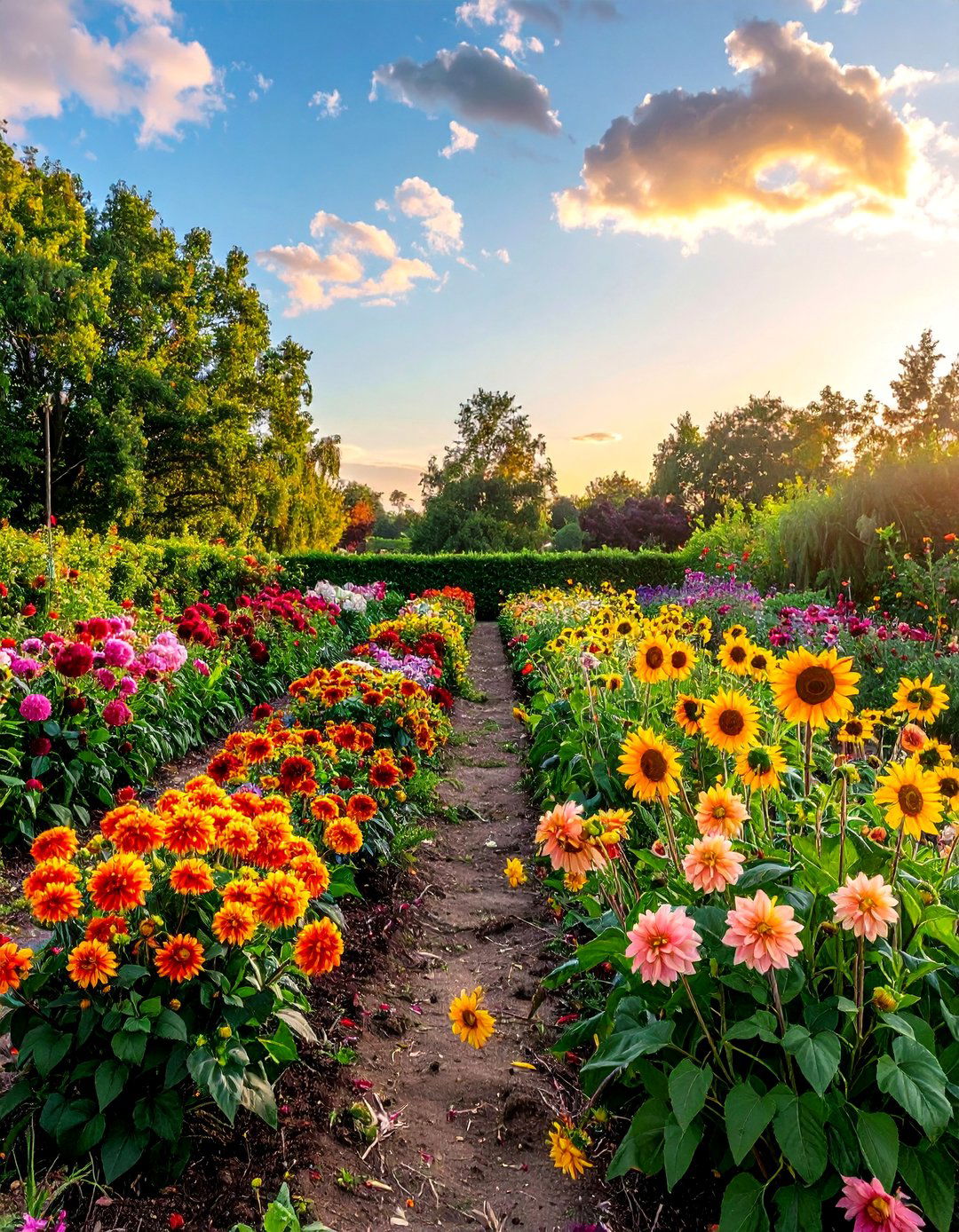
Imagine having a constant supply of fresh bouquets right from your own yard. A cut flower garden is specifically designed for this purpose, focusing on plants that produce beautiful, long-lasting blooms perfect for arranging. Popular choices include zinnias, dahlias, cosmos, and sunflowers, which are known for their prolific flowering and sturdy stems. By planting in rows, you can make tending and harvesting easier. This dedicated plot ensures you can enjoy the beauty of your garden indoors without depleting the visual appeal of your main landscape beds, providing a continuous source of color and fragrance for your home.
9. Tropical Flower Garden
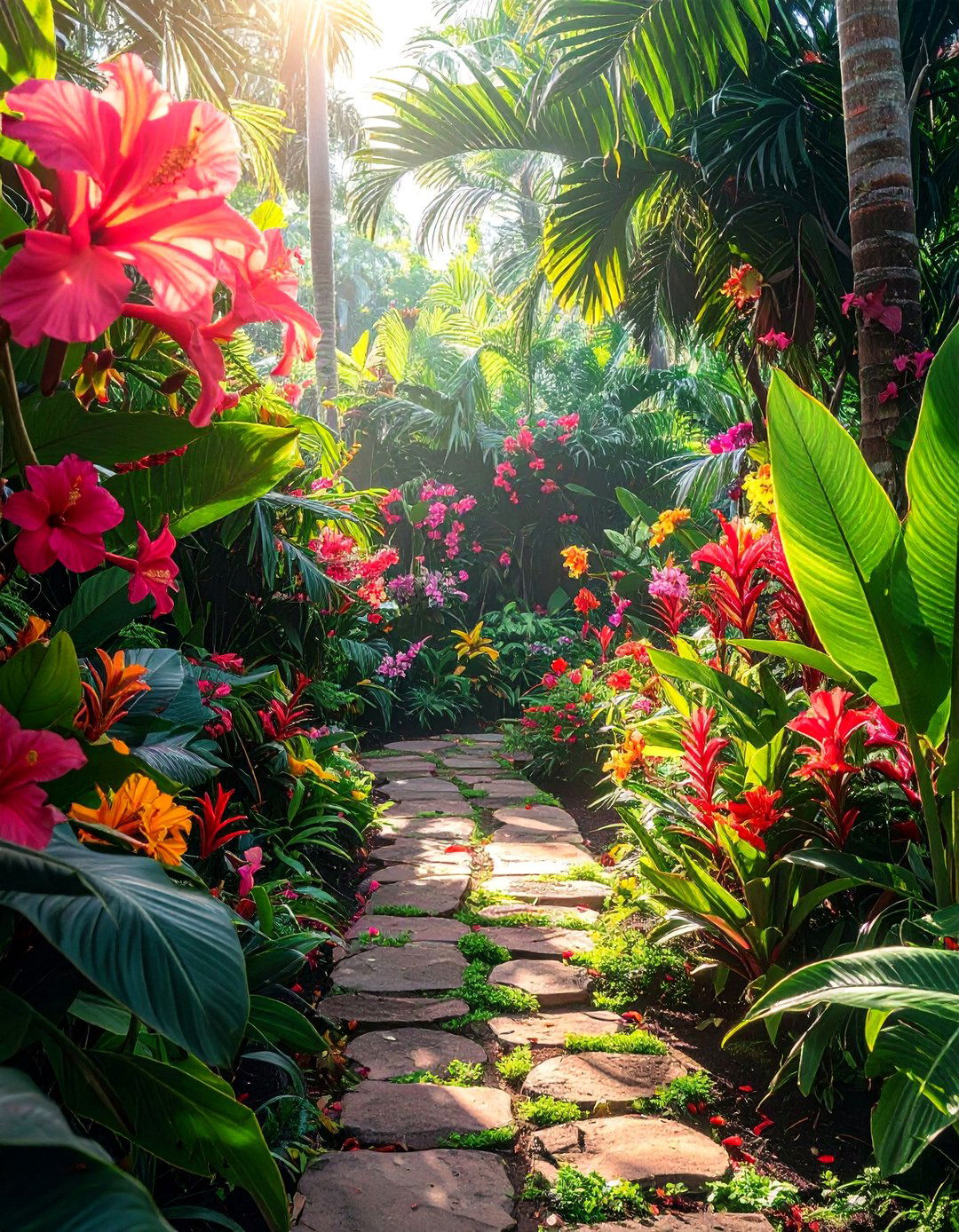
Create an exotic escape in your own backyard with a tropical flower garden. This style is defined by large, dramatic foliage and intensely colored, often fragrant, flowers. Plants like canna lilies, hibiscus, bird of paradise, and elephant ears are hallmarks of this lush aesthetic. Even in cooler climates, many tropical plants can be grown as annuals or in containers that can be brought indoors during winter. The goal is to create a dense, layered look with bold textures and vibrant hues that transport you to a faraway paradise, making your outdoor space feel like a luxurious and secluded retreat.
10. Rock Flower Garden
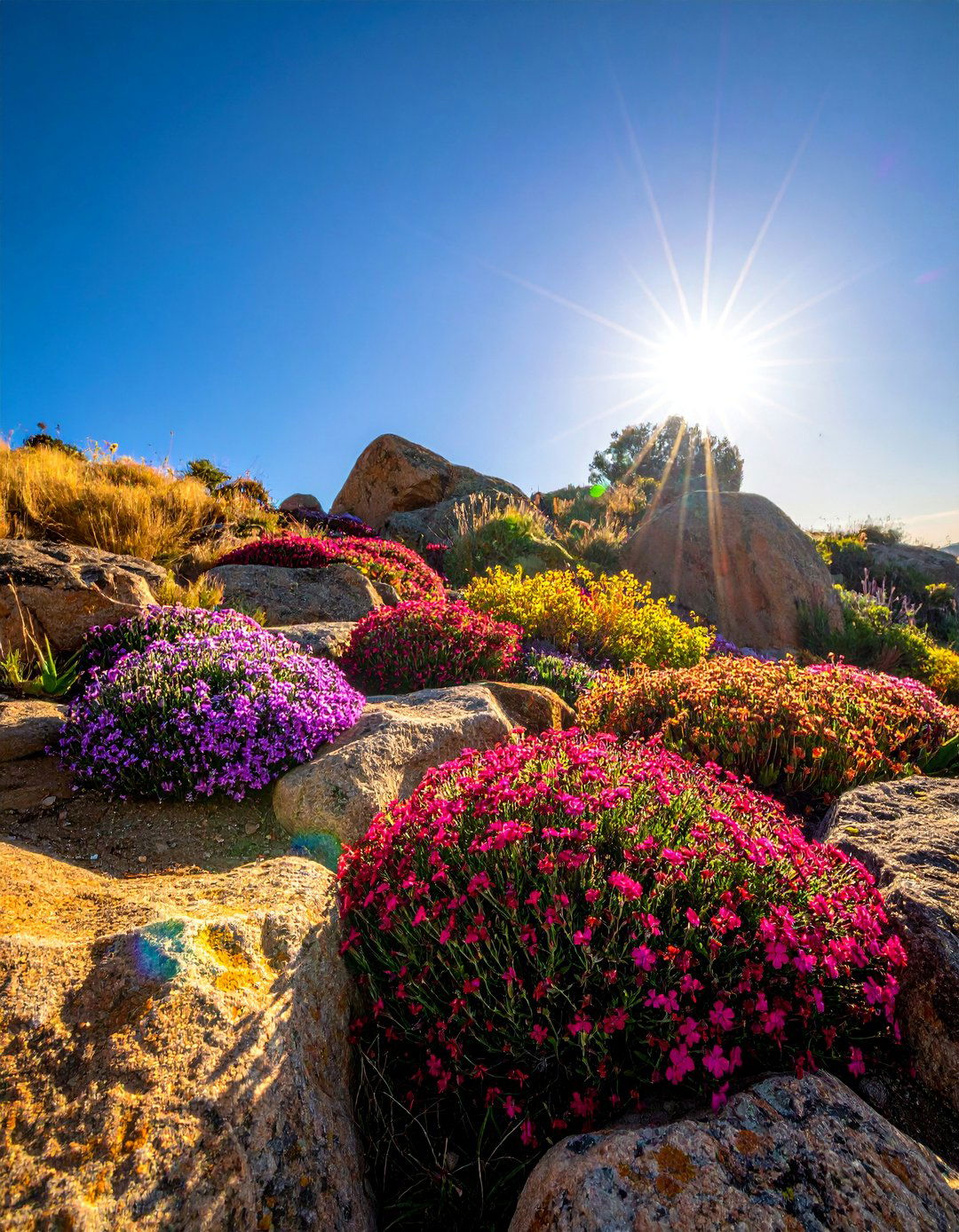
A rock flower garden, or alpine garden, beautifully integrates rugged stone elements with hardy, low-growing plants. This design mimics a natural mountain landscape and is perfect for sloped areas or yards with poor soil. Creeping phlox, sedum, and thrift are excellent plant choices as they thrive in the well-drained conditions that rockeries provide. The stones not only create visual interest and structure but also absorb heat, creating a warm microclimate for the plants. The result is a low-maintenance, drought-tolerant garden that offers unique texture and year-round appeal, showcasing the delicate beauty of resilient plants.
11. Shaded Flower Garden
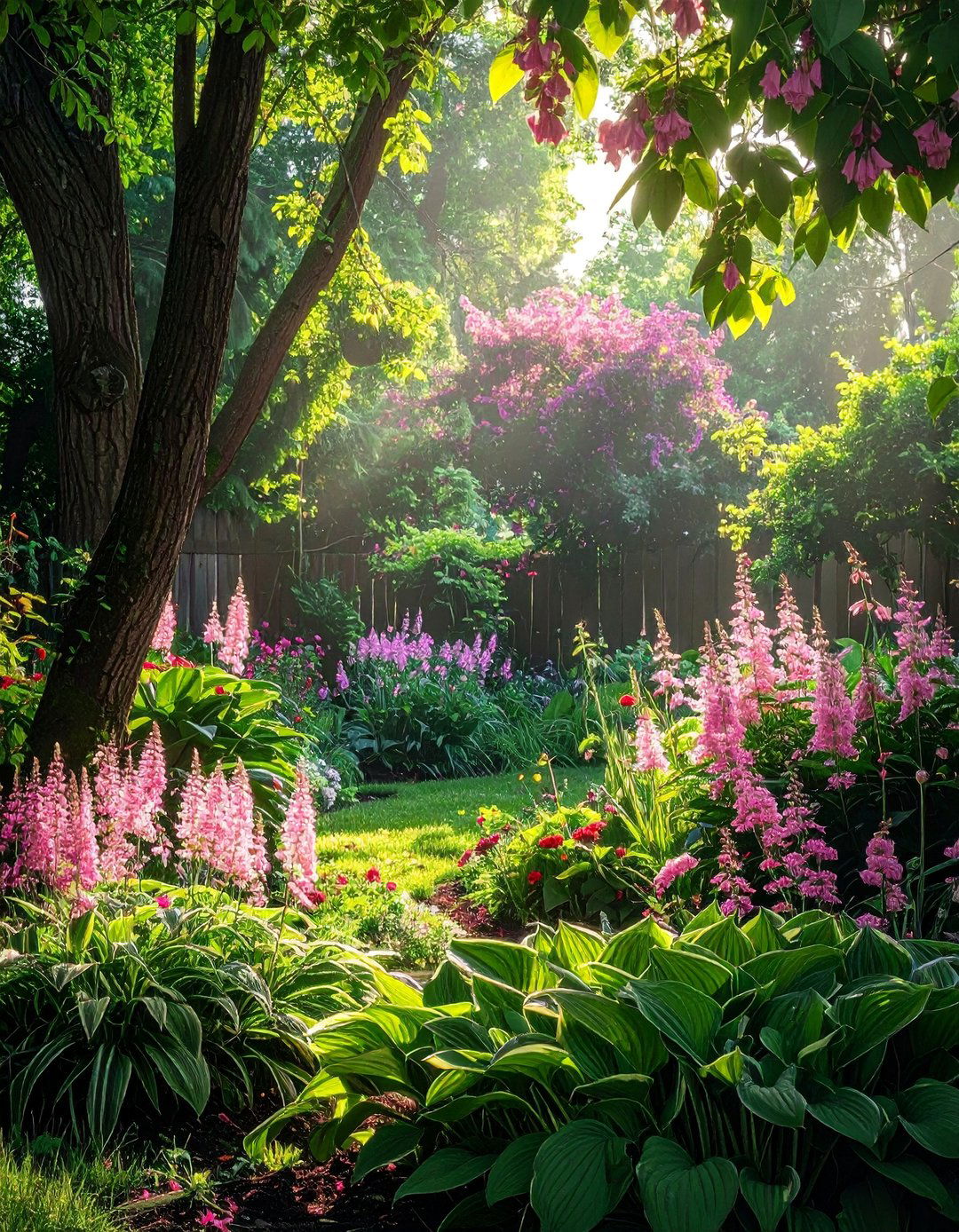
A shaded flower garden proves that you don't need full sun to create a stunning floral display. Many beautiful plants thrive in low-light conditions, offering a rich palette of colors and textures. Hostas are prized for their varied foliage, while astilbes provide feathery plumes of color, and impatiens offer bright, continuous blooms. Bleeding hearts add a touch of delicate, whimsical charm. By embracing shade-loving varieties, you can transform a dim, underutilized corner of your yard into a cool, tranquil, and enchanting retreat filled with lush greenery and subtle, elegant flowers that glow in the soft light.
12. Fragrant Flower Garden
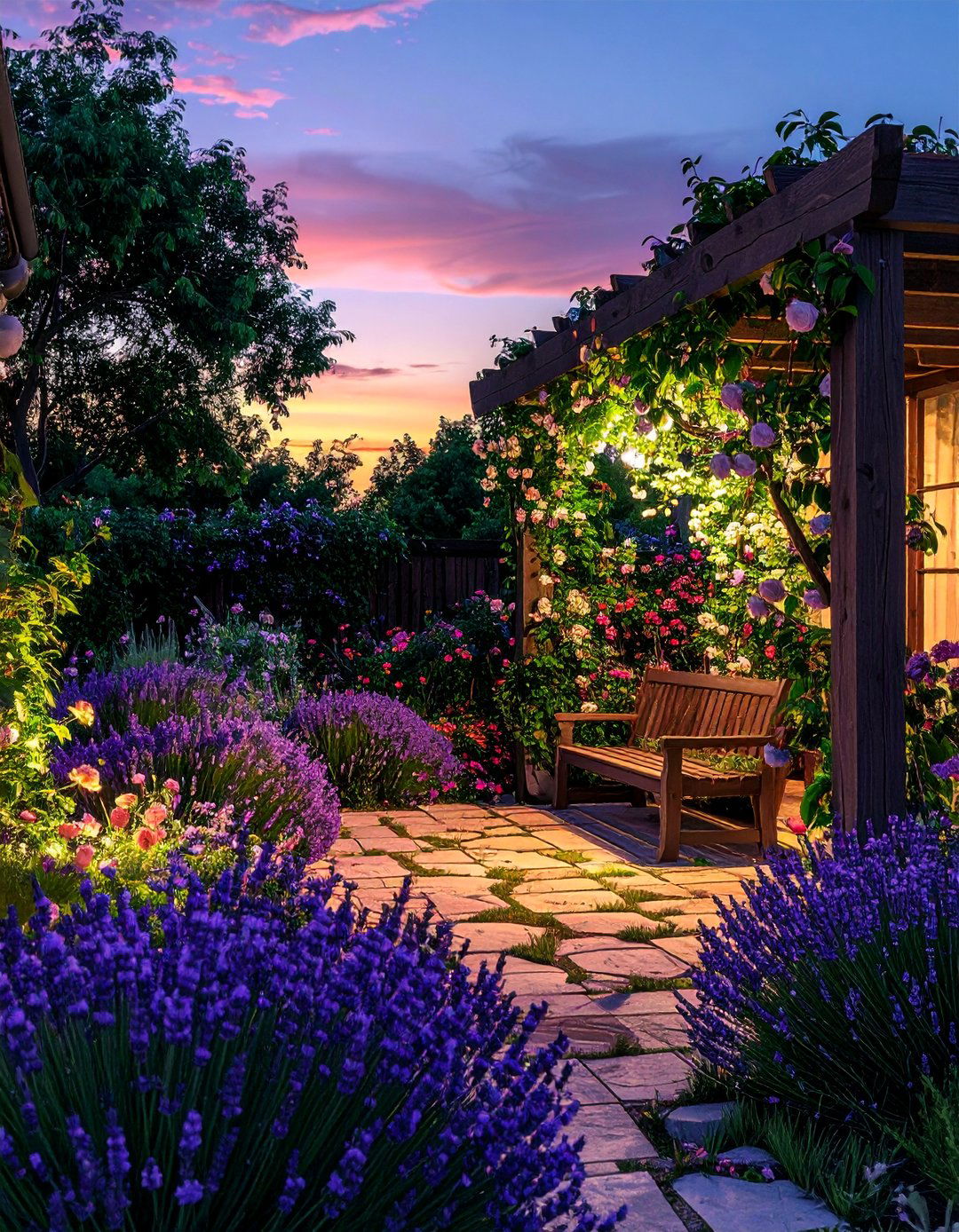
Engage all your senses by designing a fragrant flower garden. This type of garden is planned around plants known for their captivating scents, creating an immersive and memorable outdoor experience. Position aromatic flowers like jasmine, gardenias, roses, and lavender near windows, doorways, or seating areas where their perfume can be fully appreciated. Consider planting a mix of flowers that release their fragrance at different times of the day—some in the warm sun and others, like night-blooming jasmine, in the evening. This ensures your garden is a delight to the nose from morning until night.
13. Formal Flower Garden
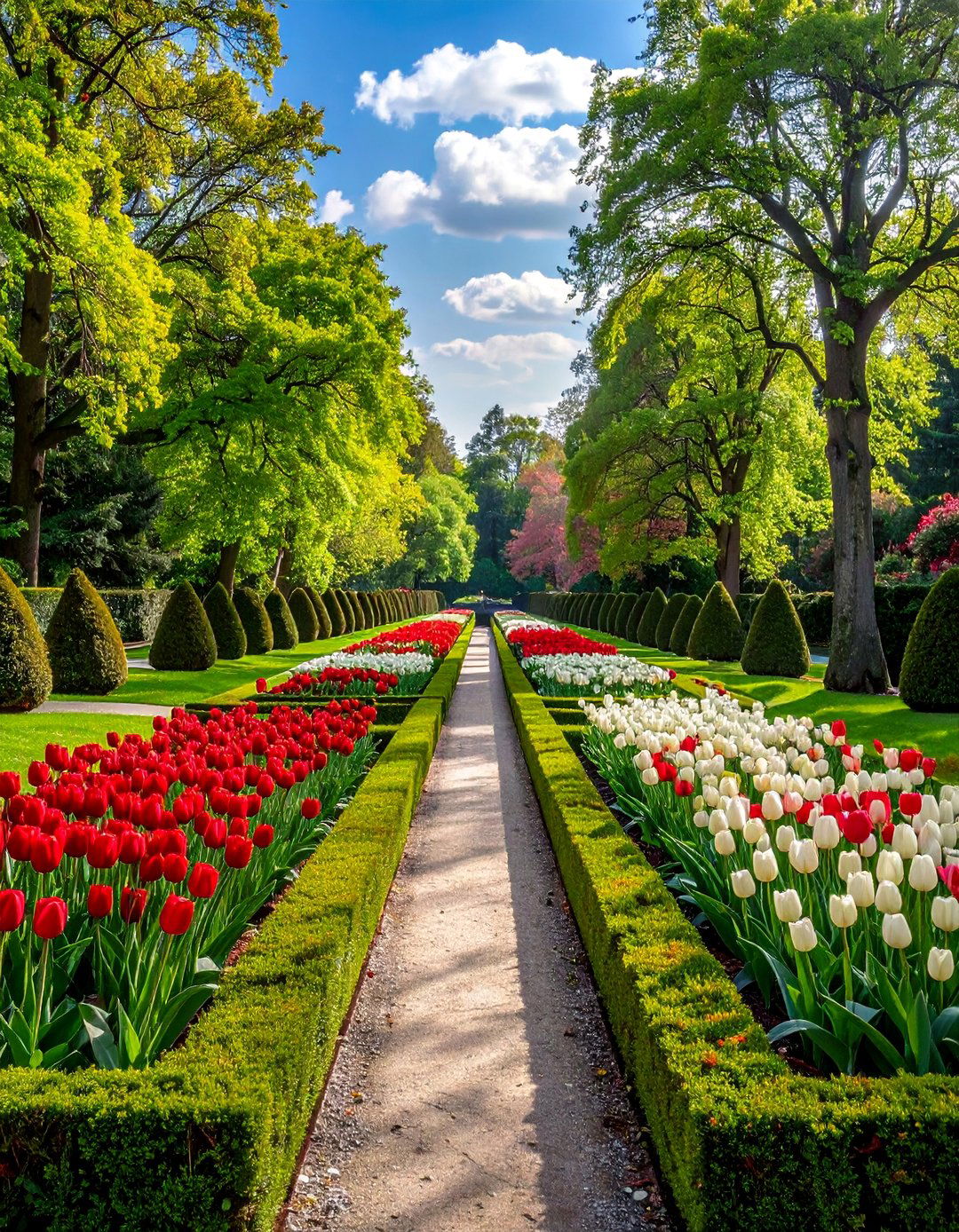
A formal flower garden is characterized by symmetry, clean lines, and a strong sense of order. This classic style often features geometric shapes, such as squares or circles, with neatly defined beds, clipped hedges, and structured pathways. Plants are typically arranged in repeating patterns or blocks of color to create a balanced and harmonious design. Boxwoods are commonly used for creating borders, while flowers like tulips, roses, and pansies are planted in tidy, organized groupings. This approach results in an elegant, sophisticated landscape that showcases precision and control, making a powerful and timeless statement.
14. Butterfly Flower Garden
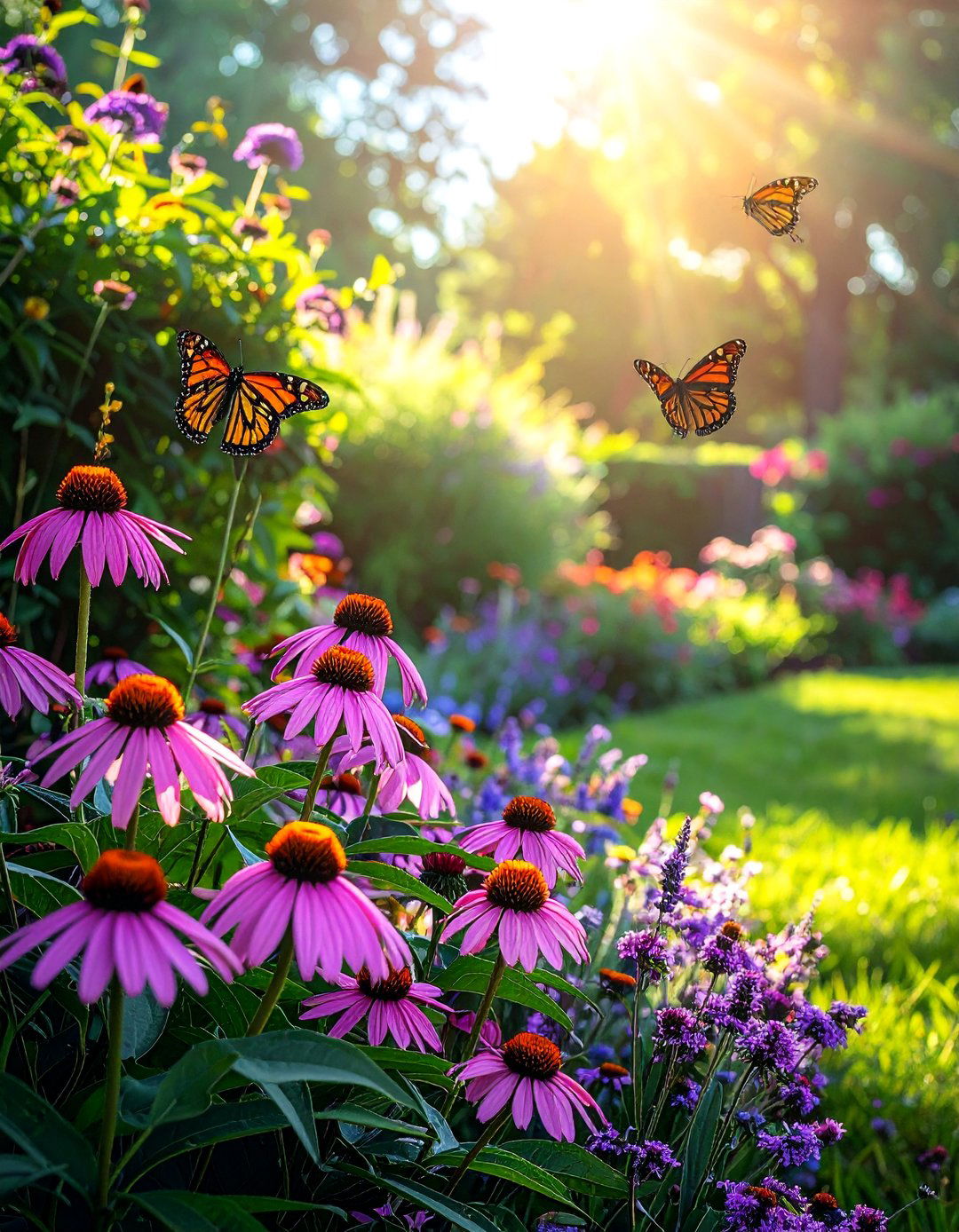
Designing a butterfly flower garden is a delightful way to attract these colorful winged visitors while adding dynamic beauty to your yard. This garden focuses on providing for the entire life cycle of butterflies, including host plants for caterpillars, like milkweed for monarchs, and nectar-rich flowers for adult butterflies. Brightly colored blooms such as butterfly bush, zinnias, and purple coneflower are irresistible to them. By planting in sunny, sheltered spots and providing a small water source, like a shallow dish with pebbles, you can create a haven that will be filled with the gentle, fluttering motion of butterflies all season.
15. Xeriscape Flower Garden
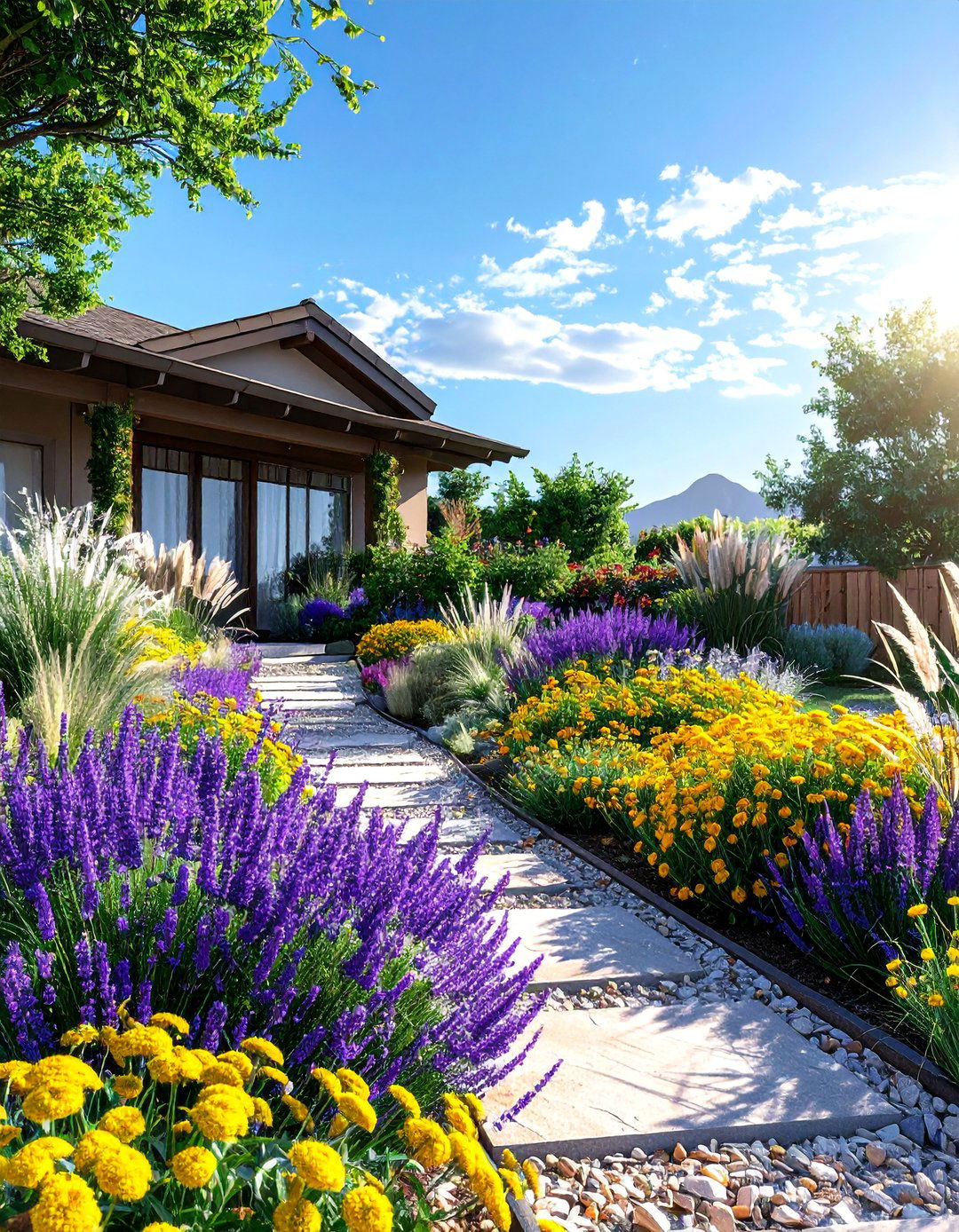
A xeriscape flower garden is a smart, sustainable choice designed to conserve water, making it ideal for dry climates or eco-conscious gardeners. This approach utilizes drought-tolerant plants that thrive with minimal irrigation once established. Stunning choices like lavender, yarrow, Russian sage, and various types of succulents and ornamental grasses offer a surprising amount of color and texture. Mulching is a key component, as it helps retain soil moisture and suppress weeds. A well-designed xeriscape is not a barren landscape but a vibrant, resilient garden that is both beautiful and environmentally responsible.
16. Moonlight Flower Garden
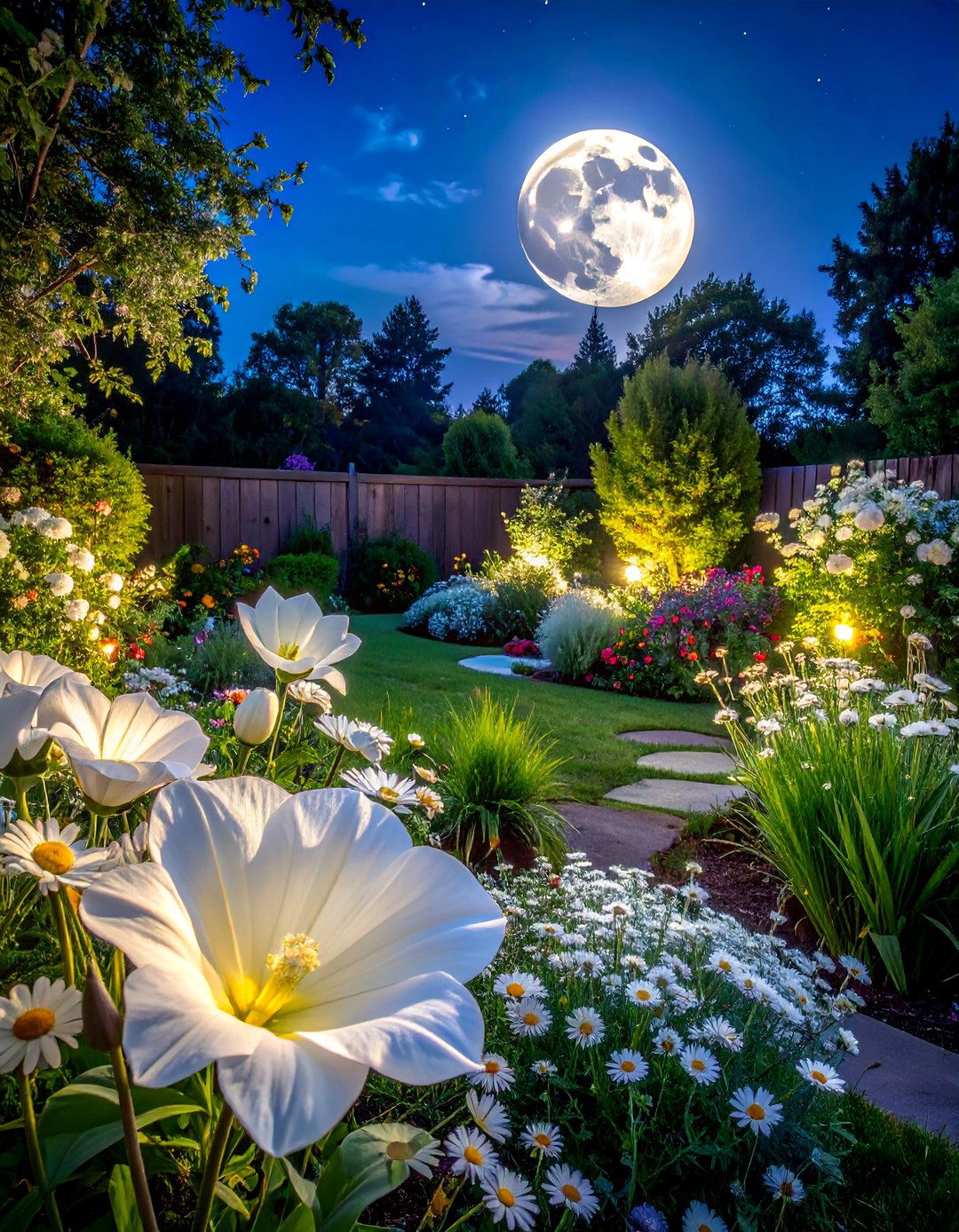
A moonlight flower garden is designed to be enjoyed after the sun sets, creating a magical and serene nighttime atmosphere. This garden features plants with white or pale-colored blooms, such as moonflowers, white roses, and Shasta daisies, which seem to glow in the twilight and under the moonlight. Plants with silvery foliage, like lamb's ear and dusty miller, also contribute to this luminous effect. Additionally, incorporating night-blooming, fragrant flowers like evening primrose or nicotiana adds an enchanting aromatic dimension. It’s a unique concept that extends the enjoyment of your garden into the evening hours.
17. Edible Flower Garden
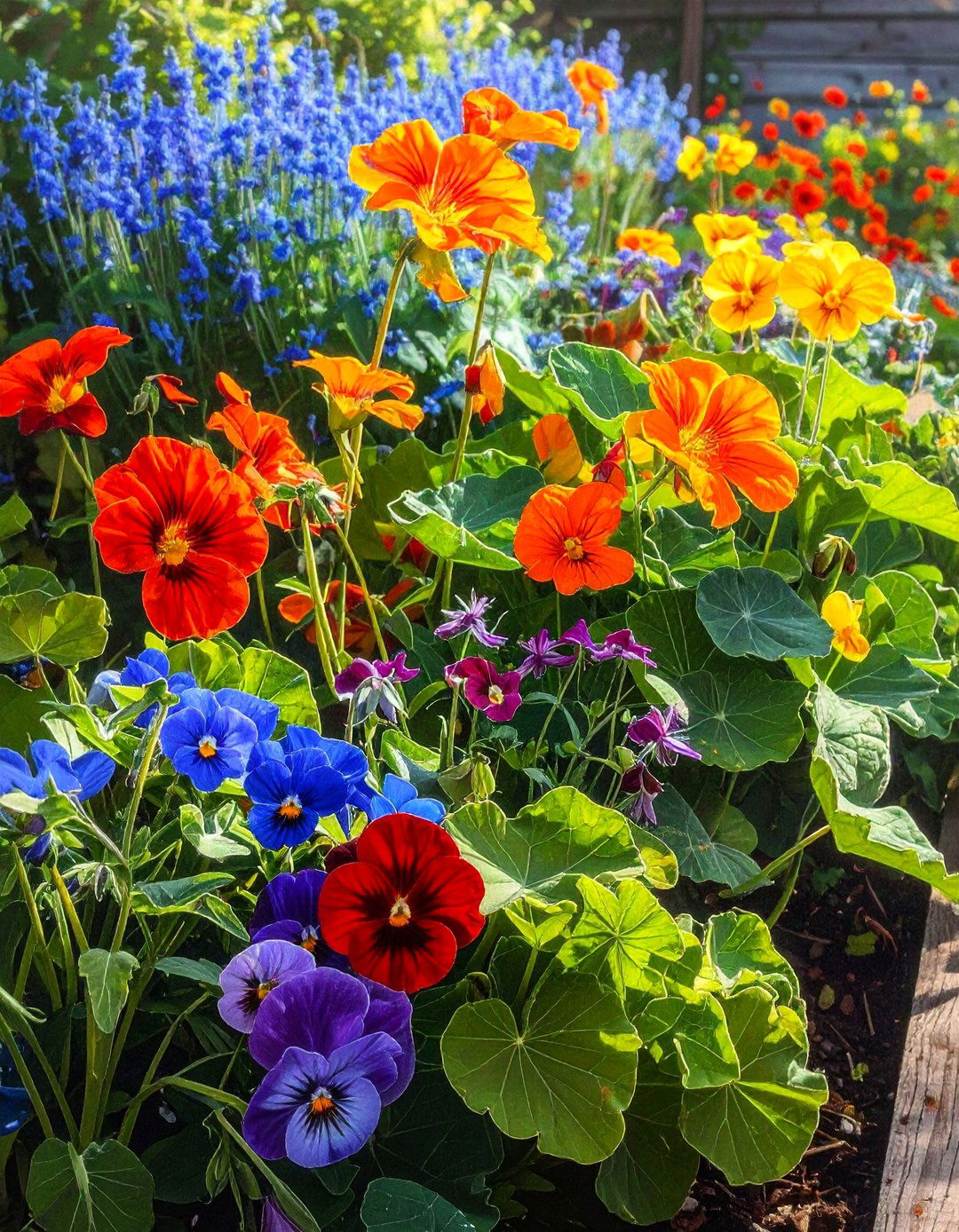
An edible flower garden is a delightful fusion of beauty and practicality, where the blooms are as much a treat for the palate as they are for the eyes. This garden includes a variety of flowers that can be used to garnish salads, crystallize for desserts, or infuse into drinks. Nasturtiums offer a peppery kick, while pansies and violas provide a mild, fresh flavor. Borage flowers have a subtle cucumber taste, and calendula petals add a splash of color to rice dishes. Growing these multi-purpose plants adds a unique and flavorful dimension to both your garden and your culinary creations.
18. Herb Spiral Flower Garden
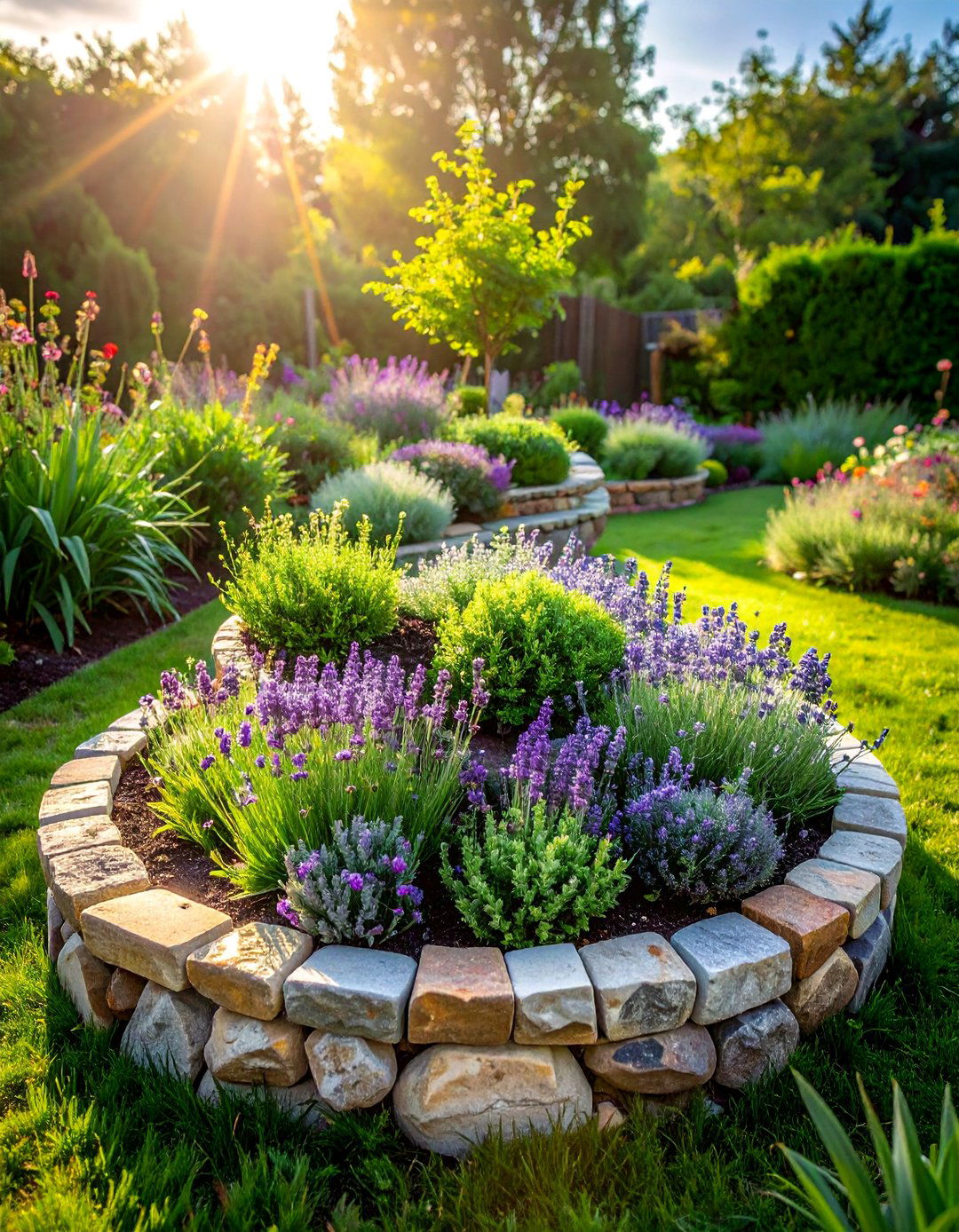
An herb spiral is a space-efficient and aesthetically pleasing design that creates multiple microclimates within a small footprint. This three-dimensional garden bed is built in an upward spiral, usually with stones or bricks. The top of the spiral is sunnier and drier, perfect for Mediterranean herbs like rosemary and thyme, while the lower, more sheltered base retains more moisture, suiting plants like mint or parsley. Many herbs, such as lavender, chives, and chamomile, produce beautiful flowers that attract pollinators, making the herb spiral a functional, productive, and visually interesting addition to any garden.
19. Japanese Zen Flower Garden
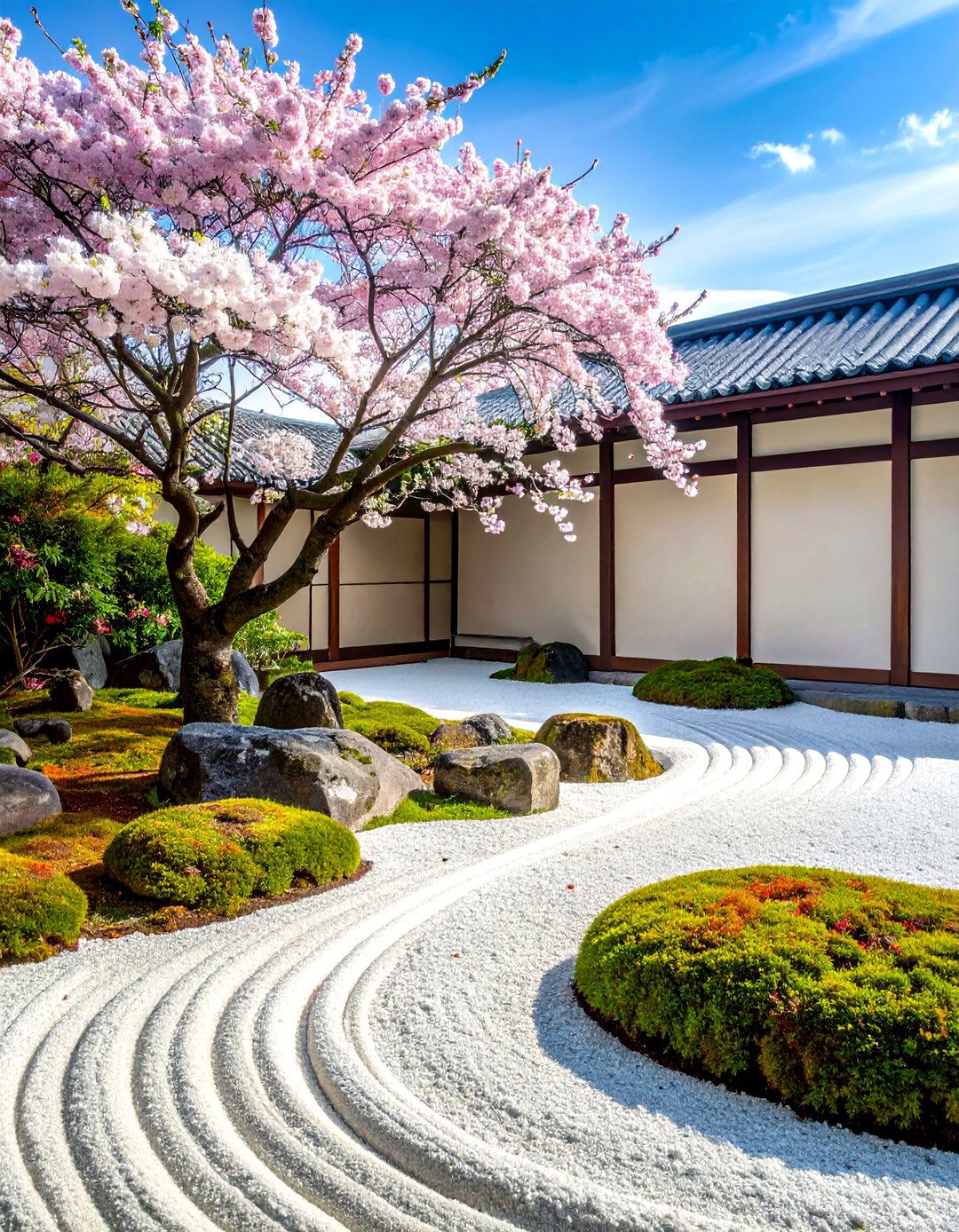
A Japanese Zen flower garden, or Karesansui, is a place of tranquility and contemplation, designed to evoke a sense of calm and simplicity. This minimalist style uses a carefully curated selection of elements, including rocks, sand, moss, and a few choice plants. Flowers are used sparingly, with an emphasis on form and seasonal significance. A flowering cherry tree, Japanese iris, or a single azalea bush might be included to provide a moment of transient beauty. The focus is on creating a serene, uncluttered space that encourages meditation and reflects the profound beauty found in nature’s understated elegance.
20. Layered Border Flower Garden
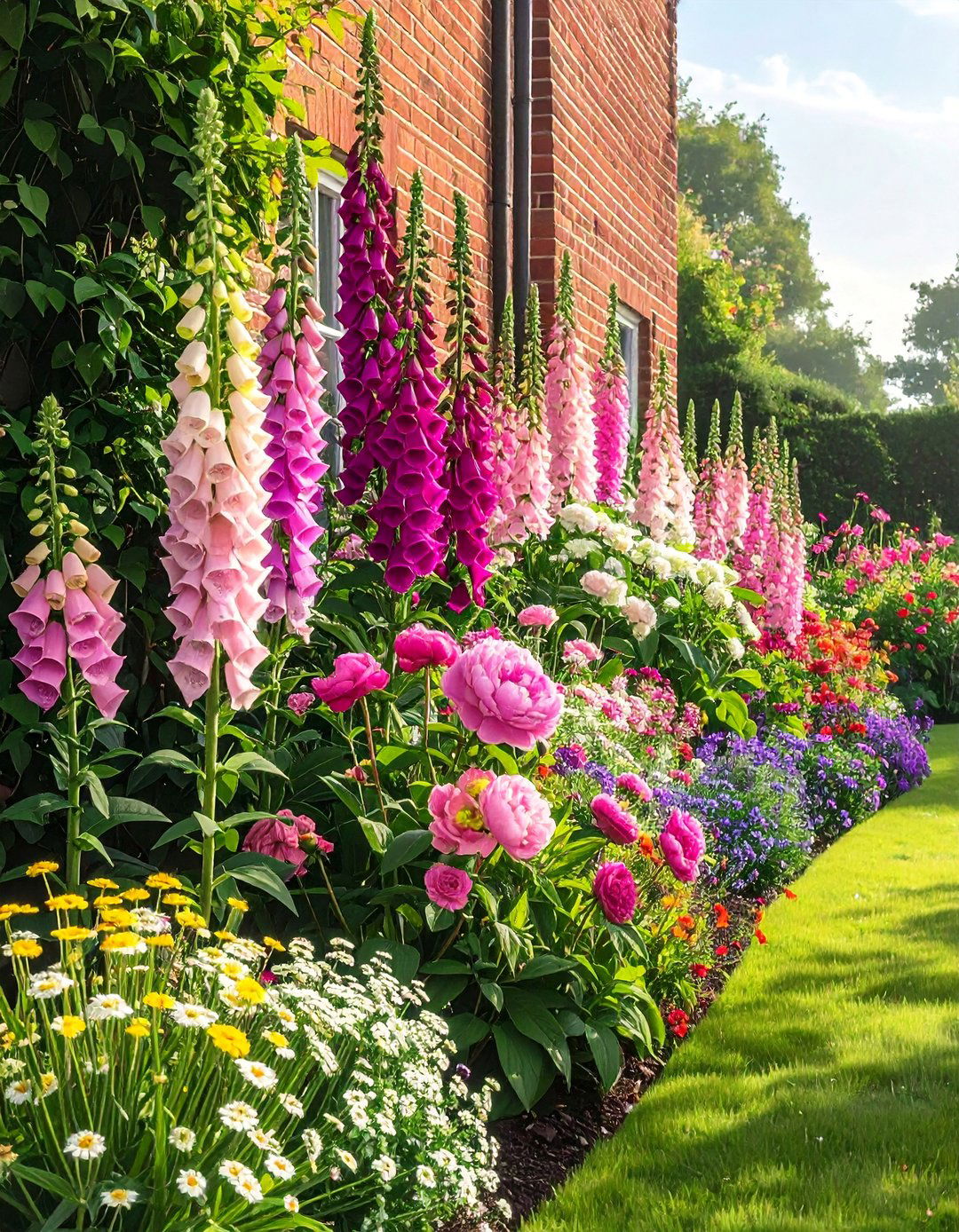
A layered border flower garden creates a lush, full look by strategically arranging plants according to their height. This classic design technique involves placing the tallest plants, such as delphiniums or foxgloves, at the back of the border. Mid-sized plants like peonies, coneflowers, and daylilies are positioned in the middle layer, while low-growing flowers like creeping phlox or alyssum are placed along the front edge. This method ensures that all plants are visible, creating a rich tapestry of colors and textures with a strong sense of depth and dimension that guides the eye through the landscape.
21. Single-Color Theme Flower Garden
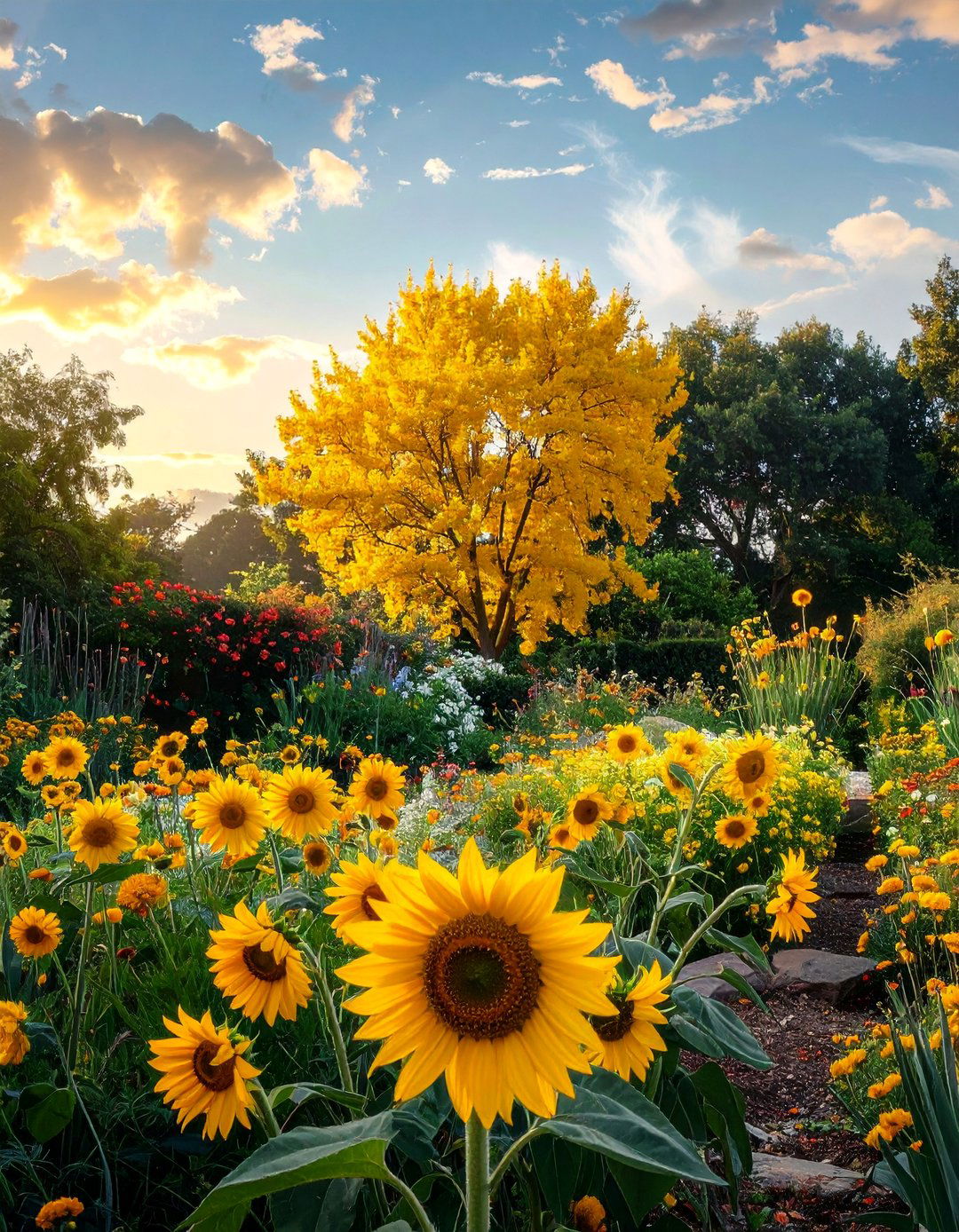
Focusing on a single color theme in your flower garden can produce a powerful and sophisticated visual statement. This approach involves selecting plants that bloom in various shades and tints of one chosen hue. For example, a garden dedicated to yellow might include sunflowers, daffodils, marigolds, and coreopsis. To maintain interest, it is crucial to incorporate a wide variety of plant heights, textures, and bloom shapes. This disciplined color palette creates a harmonious and unified look that is both calming and dramatically impactful, turning your garden into a memorable and artfully designed space.
22. Four-Season Interest Flower Garden
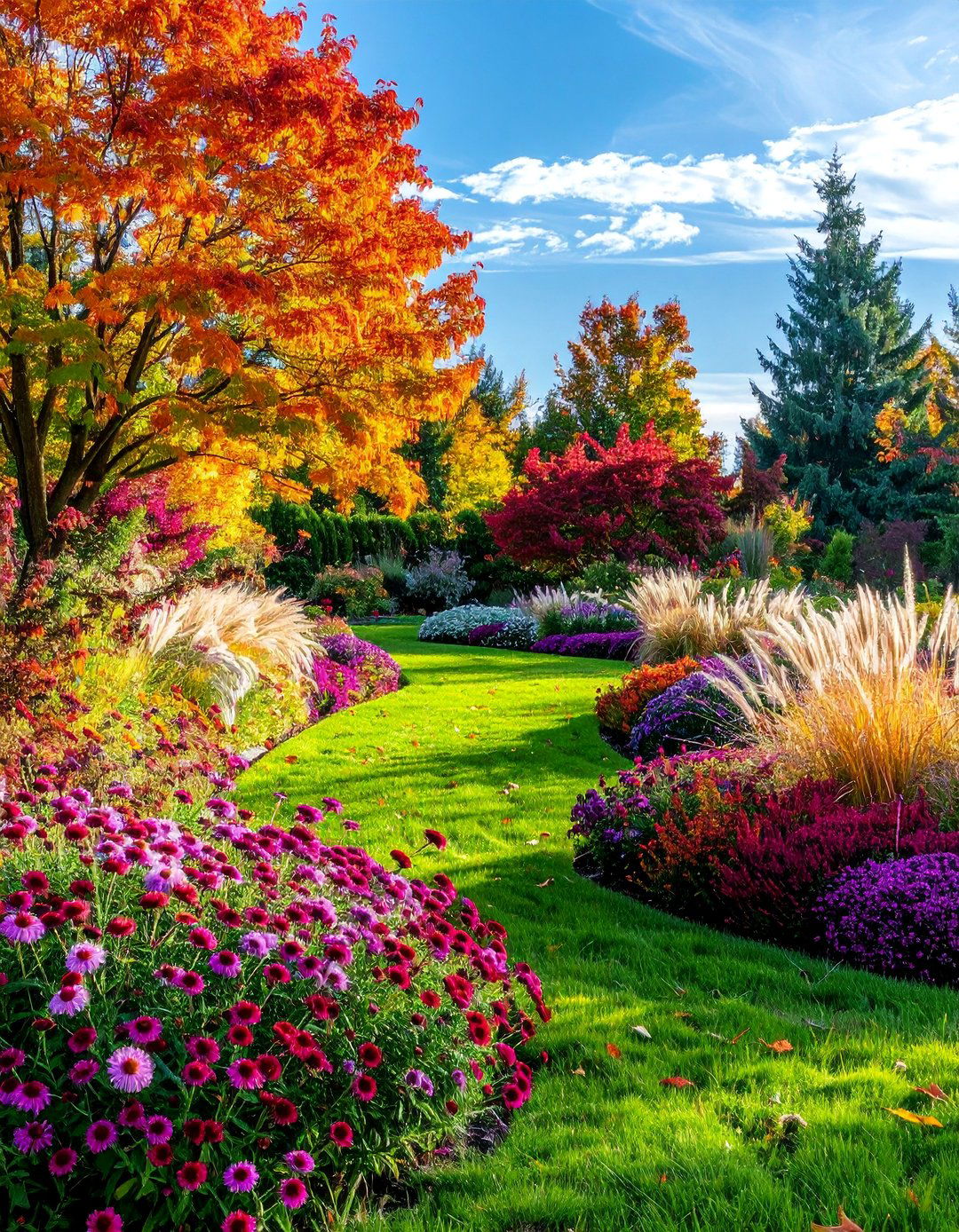
A four-season interest flower garden is thoughtfully planned to provide visual appeal throughout the entire year, not just in spring and summer. This involves selecting a diverse range of plants that offer different seasonal highlights. Spring-blooming bulbs give way to summer perennials, followed by autumn-blooming asters and sedums. In winter, the focus shifts to plants with interesting bark, like red twig dogwoods, evergreen foliage, and ornamental grasses that catch the frost. This comprehensive approach ensures that your garden remains a dynamic and beautiful landscape, offering something new to appreciate in every season.
23. Rain Flower Garden
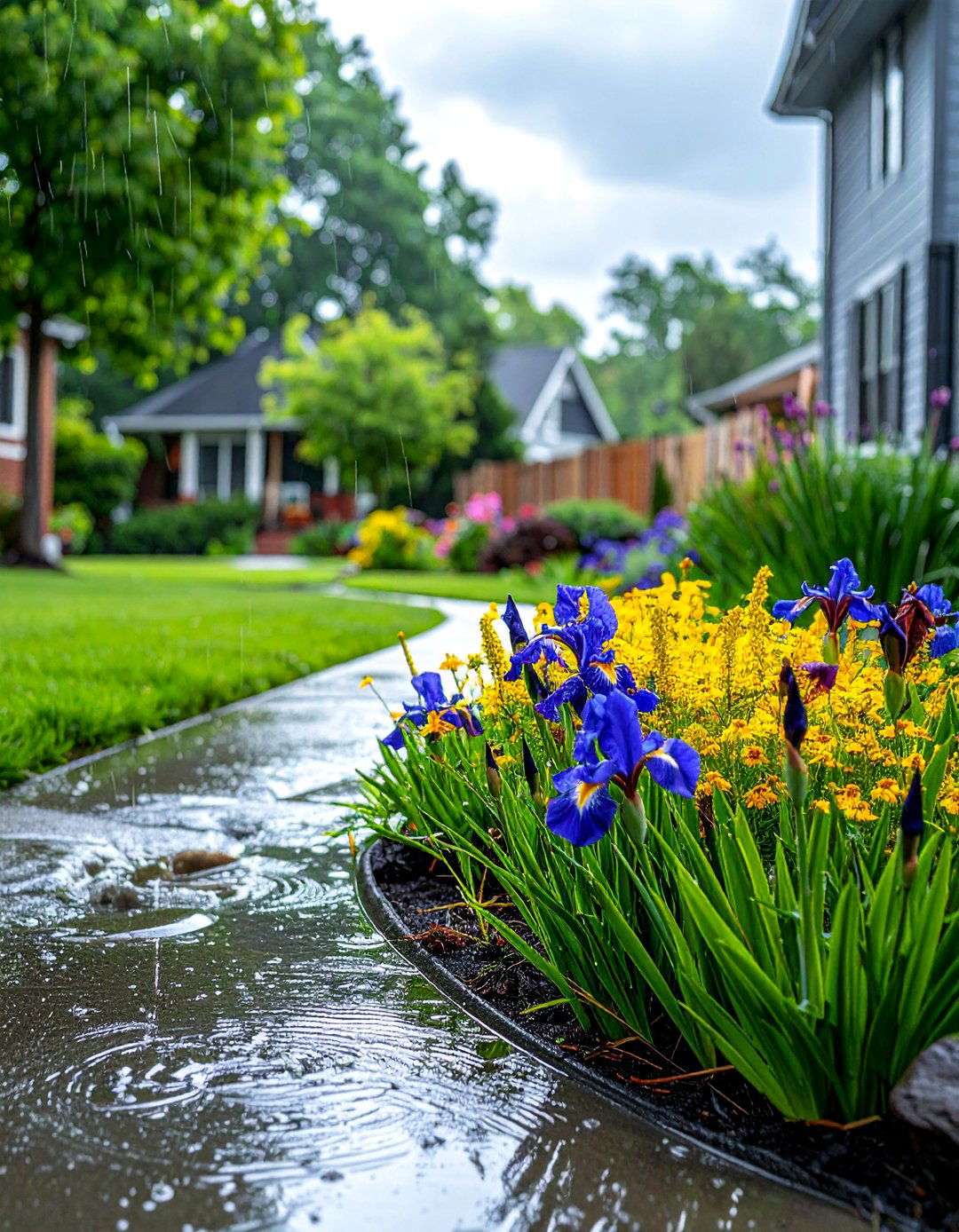
A rain garden is a specially designed landscape feature that is both beautiful and environmentally beneficial. It's a shallow depression planted with deep-rooted native plants and flowers, strategically placed to collect rainwater runoff from roofs, driveways, or lawns. Plants like irises, swamp milkweed, and joe-pye weed are excellent choices as they can tolerate both wet and dry conditions. By capturing and filtering stormwater, a rain garden helps prevent erosion and reduce pollution in local waterways. It’s a functional and attractive way to manage water on your property while creating a habitat for wildlife.
24. Coastal Flower Garden
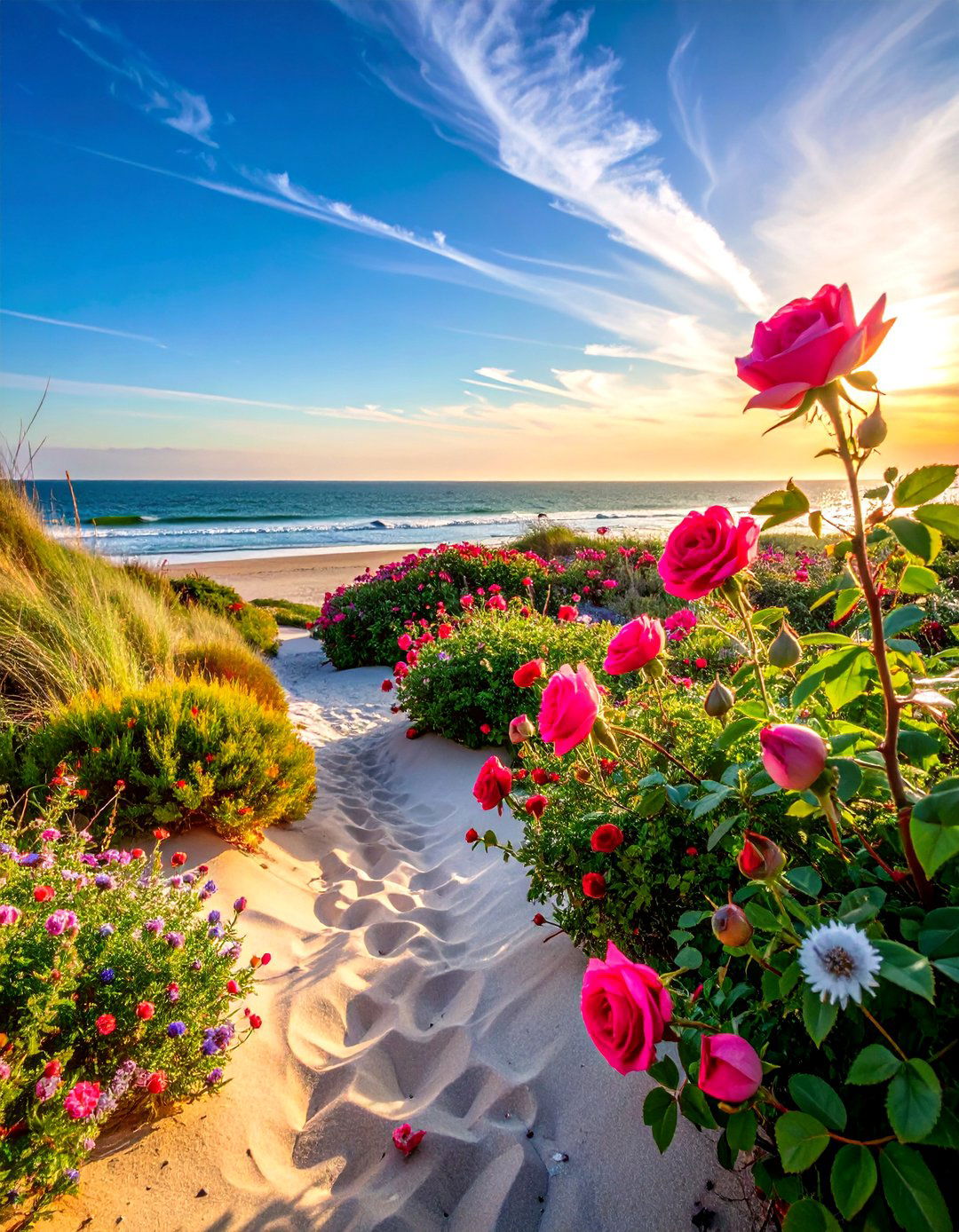
A coastal flower garden is designed to withstand the unique challenges of a seaside environment, including sandy soil, salt spray, and strong winds. The key is to choose hardy, salt-tolerant plants that can thrive in these conditions. Rugosa roses, sea holly, lavender, and ornamental grasses are excellent options that provide color and texture without requiring extensive care. These resilient plants often have tough, waxy, or silvery leaves that help them conserve moisture. The result is a beautiful, windswept garden that complements the natural coastal landscape and remains vibrant despite the harsh elements.
25. Window Box Flower Garden
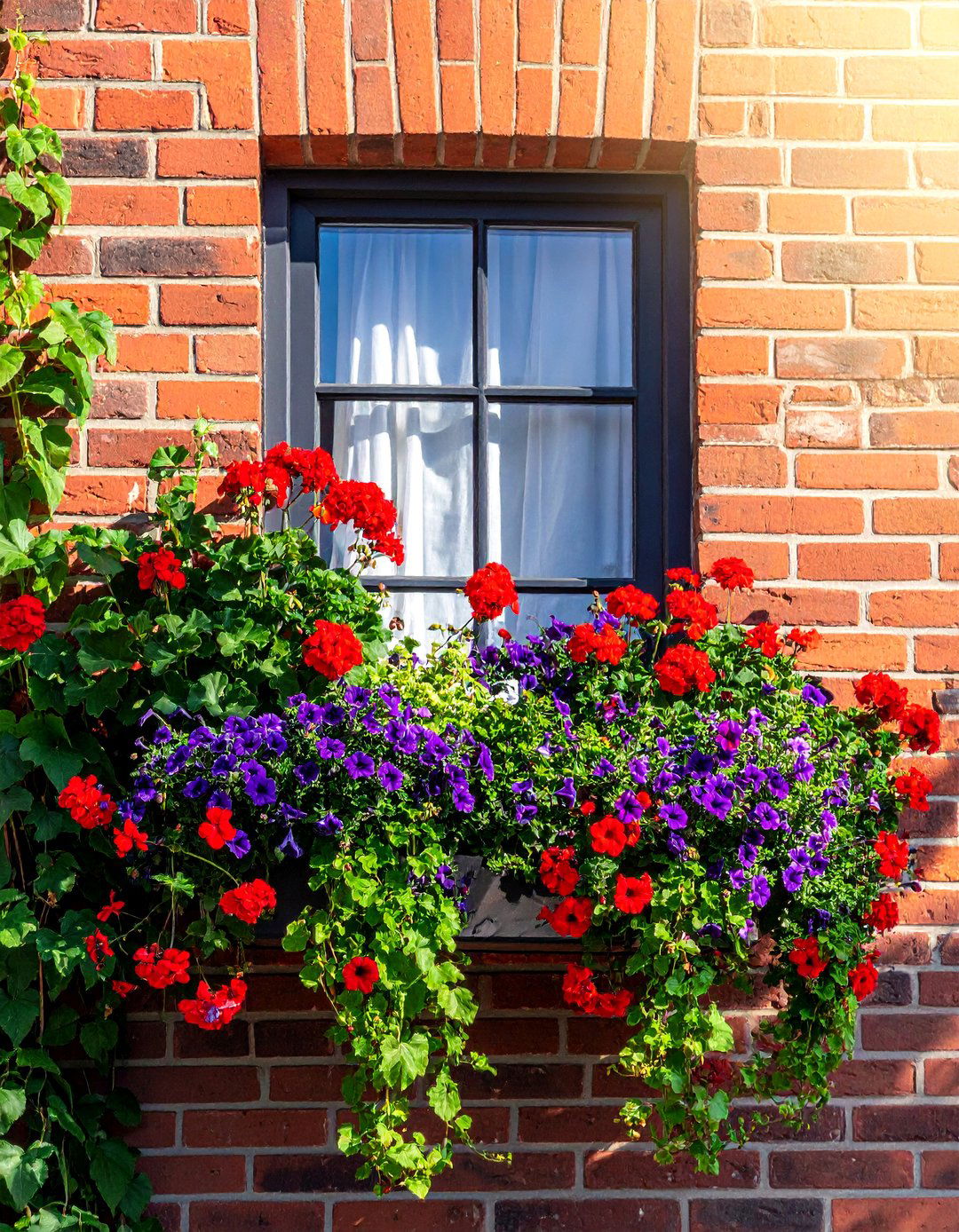
A window box flower garden is a perfect way to add a splash of charm and color to your home's exterior, especially when ground space is nonexistent. These compact containers can be filled with a vibrant mix of plants, creating a miniature garden right outside your window. A classic design often includes a "thriller" (a tall, central plant), "fillers" (mounding plants to fill the space), and "spillers" (trailing plants that cascade over the edge). Geraniums, petunias, and sweet potato vines are popular choices that provide a long-lasting and eye-catching display, instantly boosting your home’s curb appeal.
26. Gravel and Flower Garden
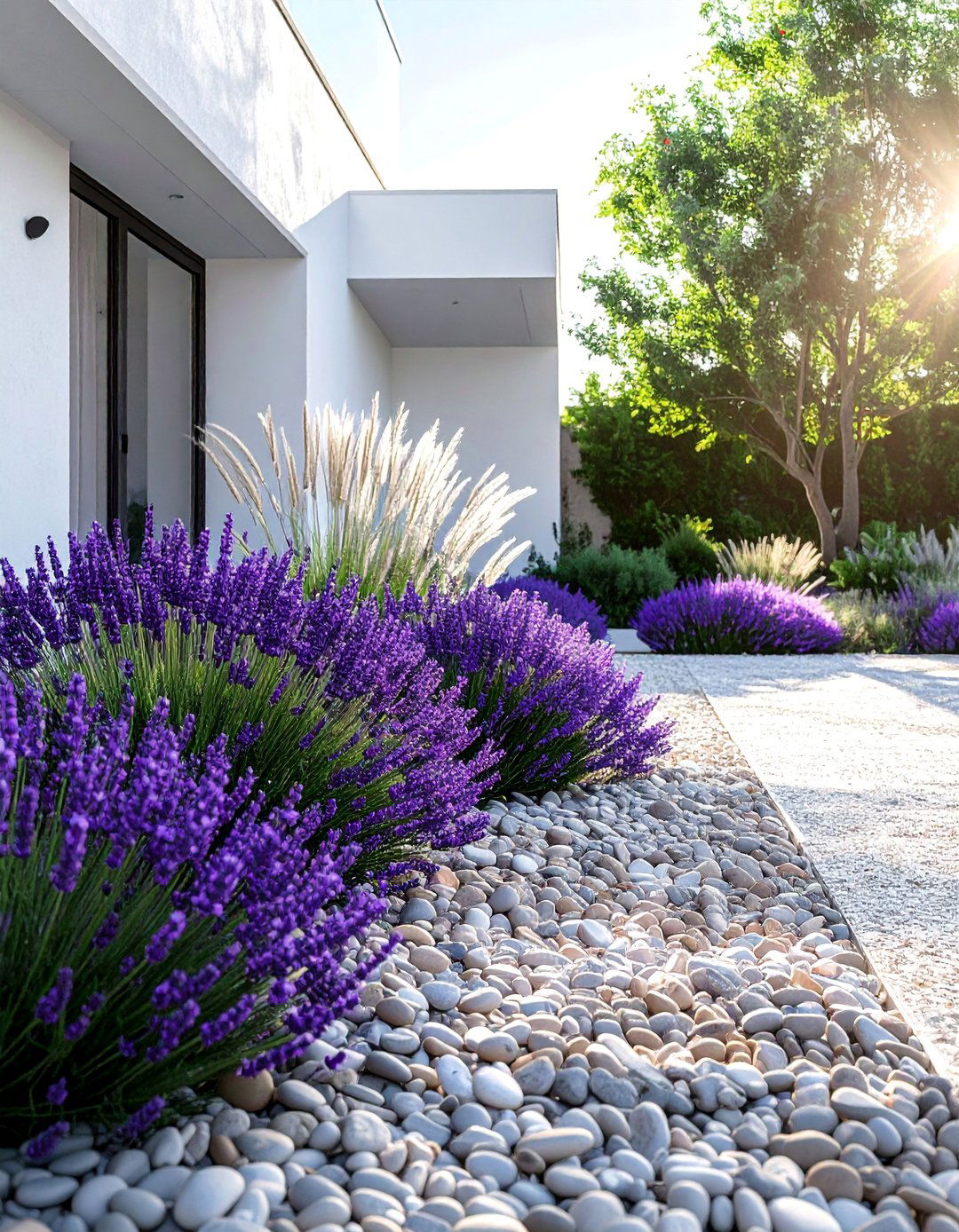
Combining gravel with flowering plants creates a modern, low-maintenance garden with a unique textural appeal. Gravel serves as a mulch, suppressing weeds and conserving soil moisture, while providing a clean, neutral backdrop that makes the colors of the flowers pop. This style is perfect for drought-tolerant plants like sedums, lavender, and Russian sage, which thrive in the excellent drainage conditions a gravel bed provides. You can use gravel to create pathways or to fill entire beds, interspersing it with carefully chosen plants for a minimalist yet striking landscape that is both sustainable and chic.
27. Bog Flower Garden
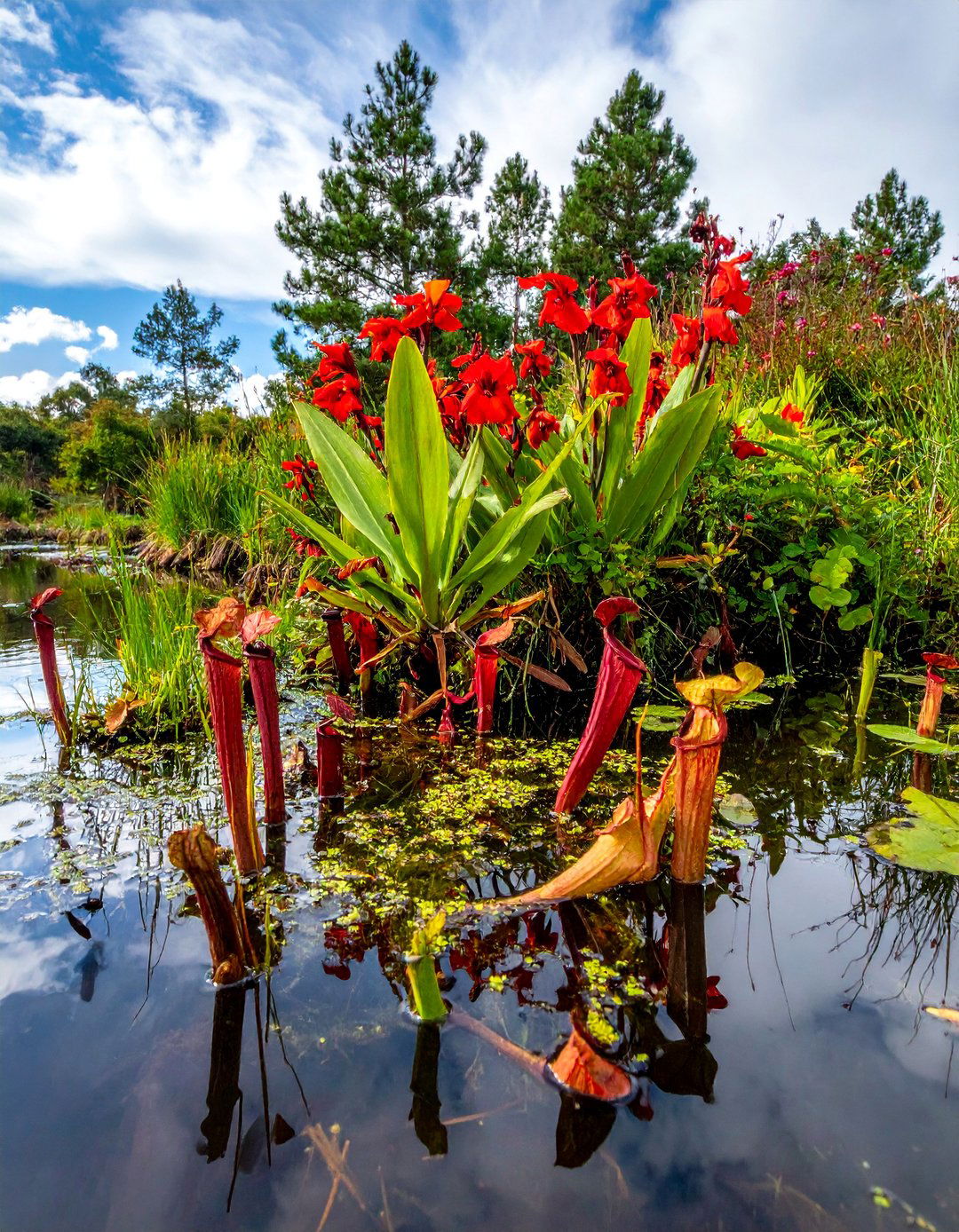
A bog garden is designed for those naturally wet, poorly drained areas of a yard where many other plants fail to thrive. Instead of trying to amend the soil, this approach embraces the moist conditions by cultivating plants that love "wet feet." Colorful and fascinating options include pitcher plants, Japanese iris, and cardinal flowers, which all flourish in constantly damp soil. A bog garden can be created in a natural low spot or by using a pond liner to retain water. It transforms a problematic area into a unique and thriving ecosystem, attracting a variety of interesting wildlife.
28. Sunken Flower Garden
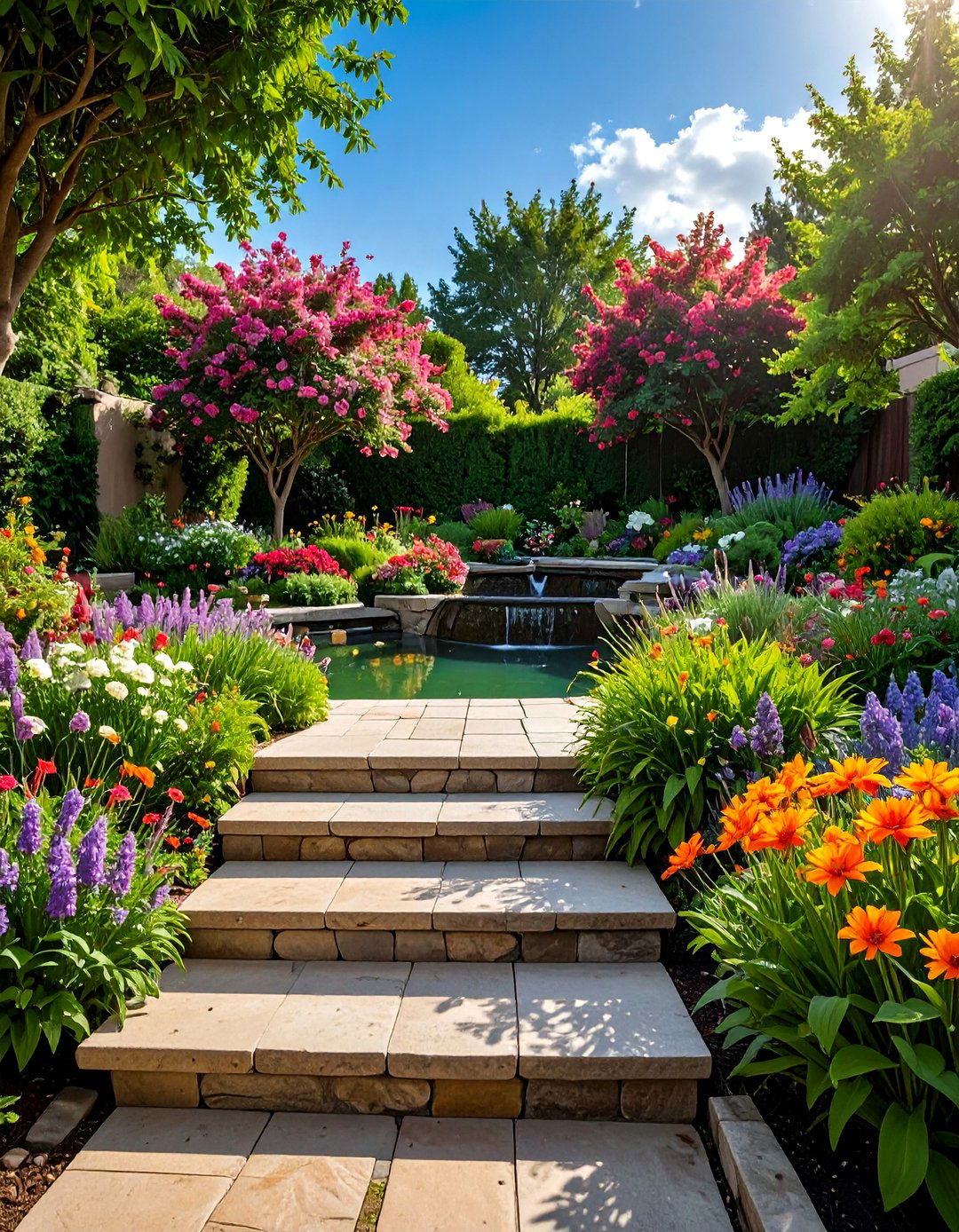
A sunken flower garden, also known as a patio garden or garden room, is set at a lower elevation than the surrounding landscape, creating a sheltered and intimate enclosure. This design offers protection from wind and can create a warmer microclimate, allowing you to grow a wider variety of plants. Steps leading down into the garden add a sense of drama and discovery. The enclosed nature of a sunken garden makes it an ideal spot for fragrant flowers, where their scent can be concentrated and enjoyed. It's a perfect way to create a secluded, private retreat for relaxation and entertainment.
29. Hanging Basket Flower Garden
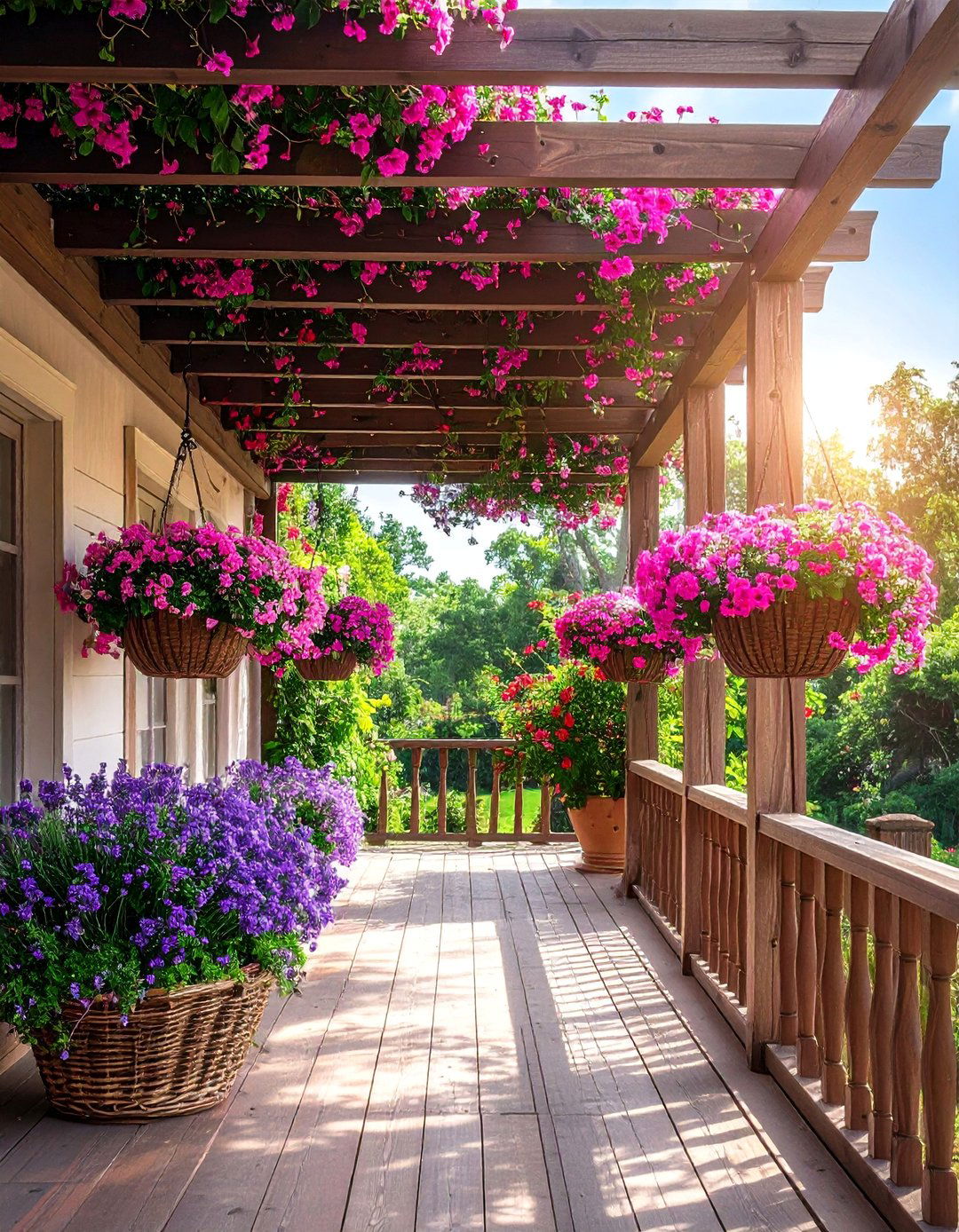
A hanging basket flower garden utilizes vertical space to create dazzling, suspended spheres of color. This is an excellent solution for adding floral beauty to porches, patios, and pergolas without taking up any floor space. To create a full, lush look, plant densely with a mix of upright and trailing plants. Popular choices include fuchsias, petunias, and verbena, which provide continuous blooms throughout the season. Proper watering is crucial as hanging baskets dry out quickly. This method allows you to bring flowers up to eye level, creating an immersive and vibrant floral display.
30. Prairie Flower Garden
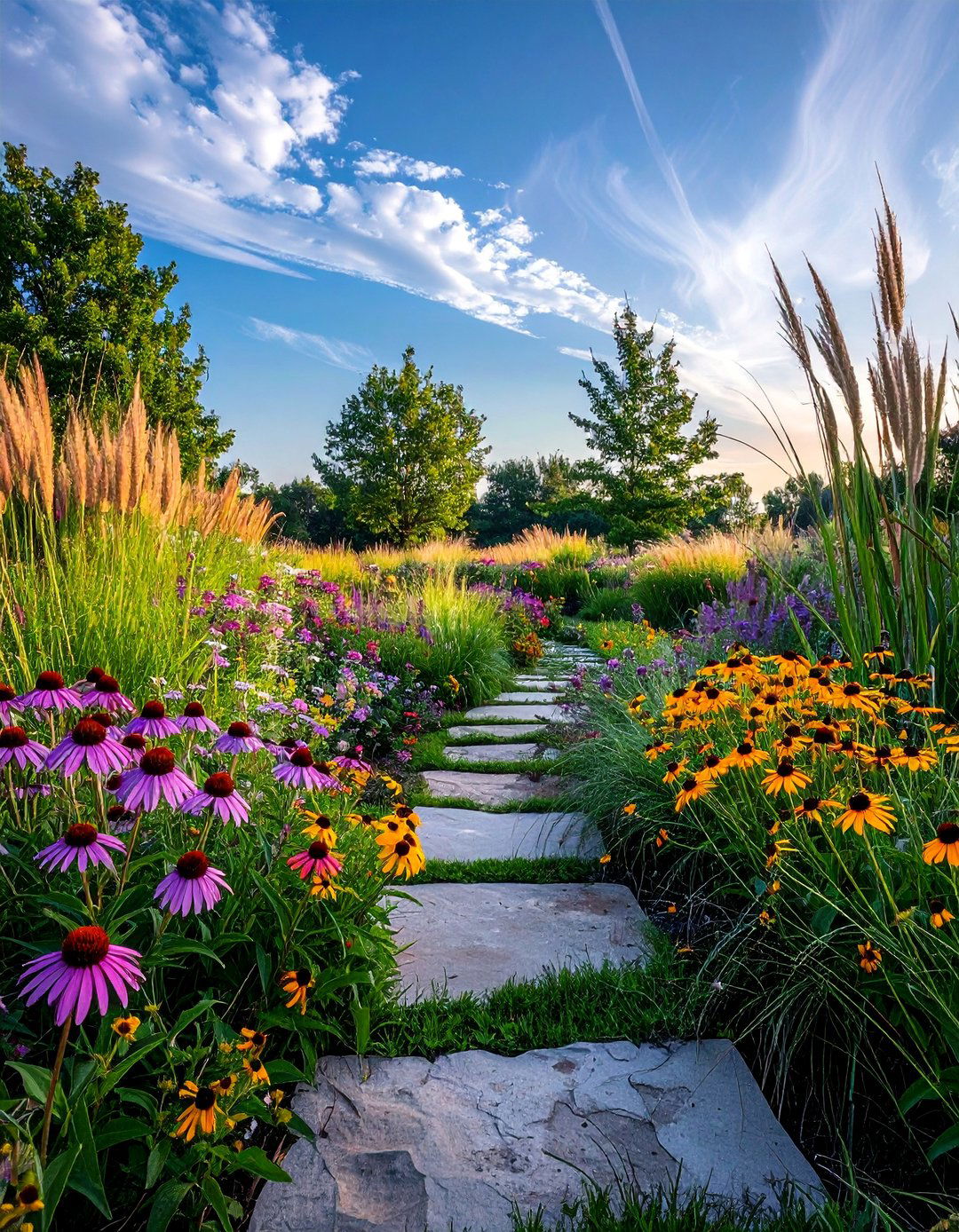
A prairie flower garden emulates the natural beauty and resilience of North America's native grasslands. This garden style features a mix of native grasses and hardy perennial wildflowers, such as purple coneflower, black-eyed Susan, and blazing star. These plants are adapted to local conditions, requiring minimal watering, fertilizer, or pest control once established. A prairie garden provides crucial habitat and food for native pollinators and wildlife. It offers a stunning, low-maintenance landscape with a succession of blooms and textures that change throughout the seasons, connecting your garden to its regional ecosystem.
Conclusion:
Ultimately, designing a flower garden is a deeply personal journey that reflects your unique style and connection to nature. From the structured elegance of a formal garden to the untamed beauty of a wildflower meadow, the possibilities are boundless. Each idea offers a distinct way to enhance your outdoor space, support local ecosystems, and create a sanctuary for relaxation and enjoyment. By choosing a concept that resonates with you and your environment, you can cultivate a stunning, living masterpiece that brings joy and color to your home year after year.

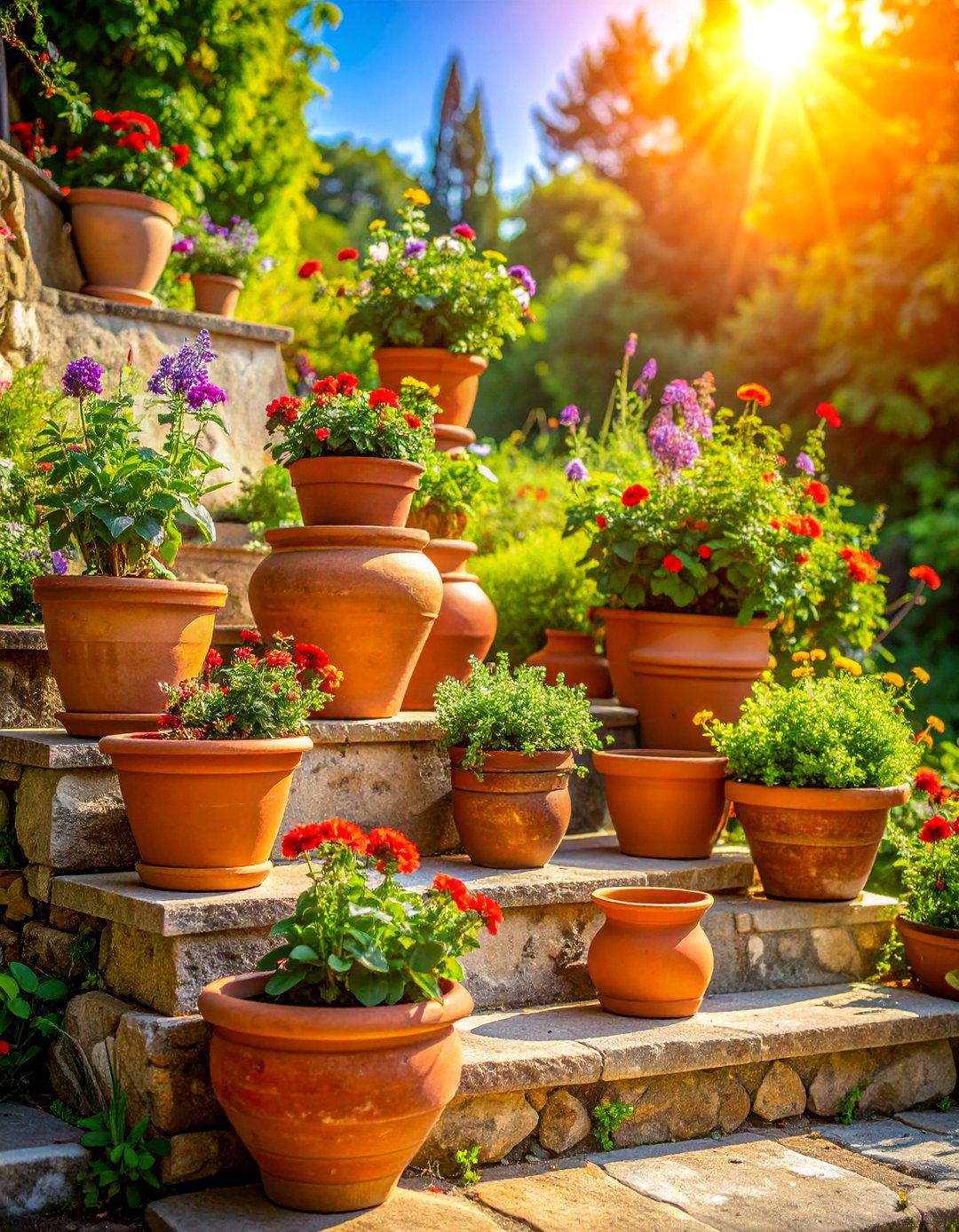
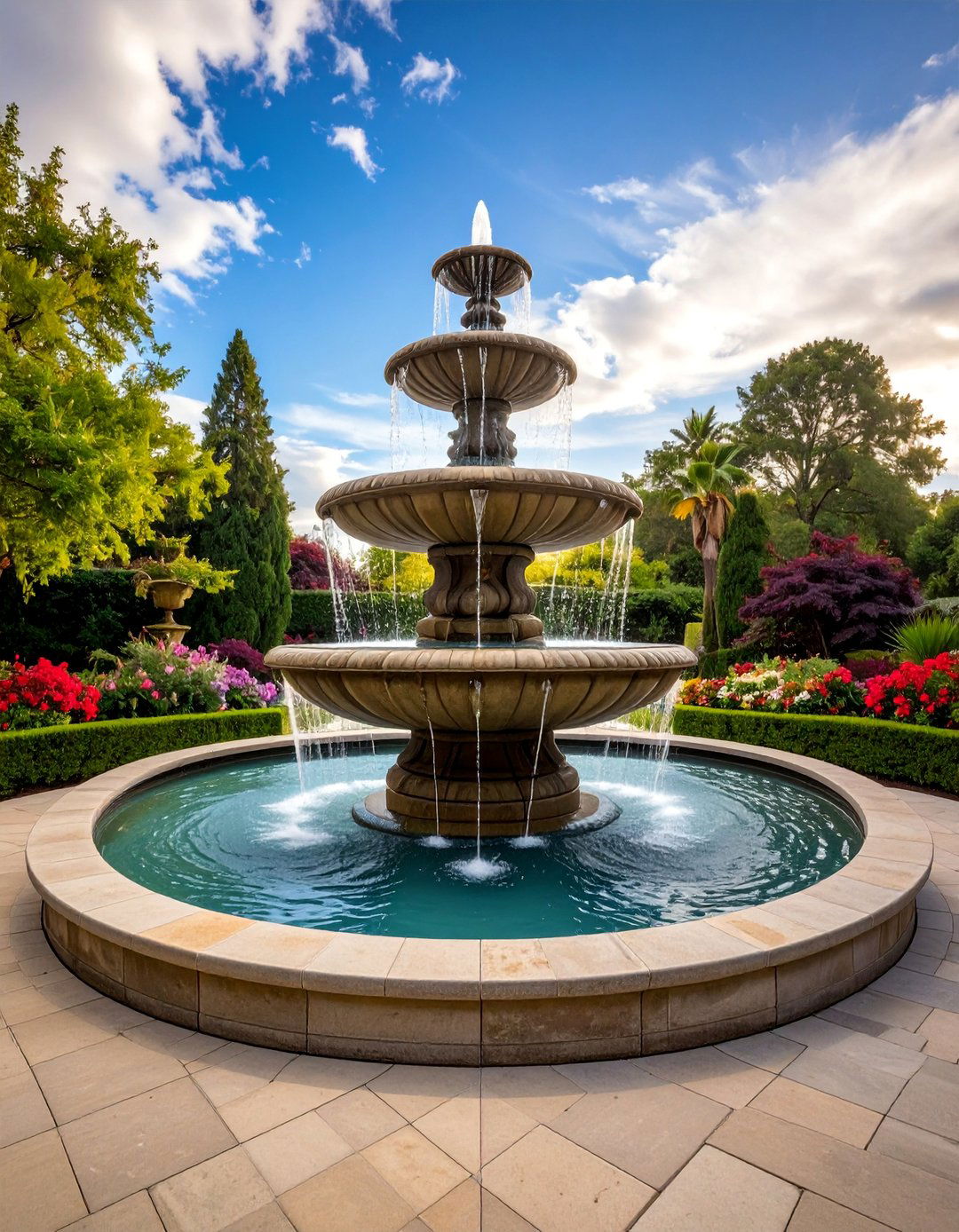
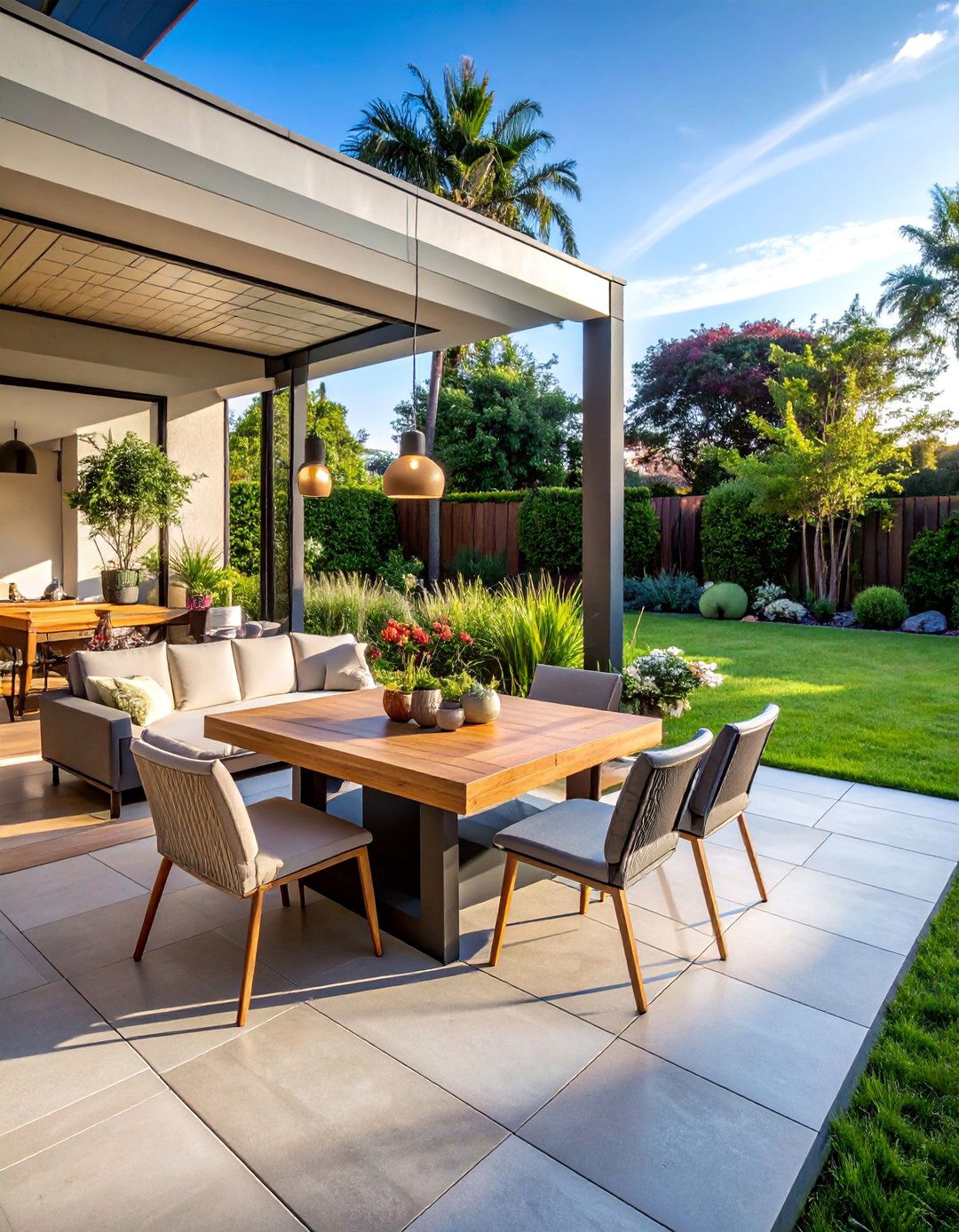
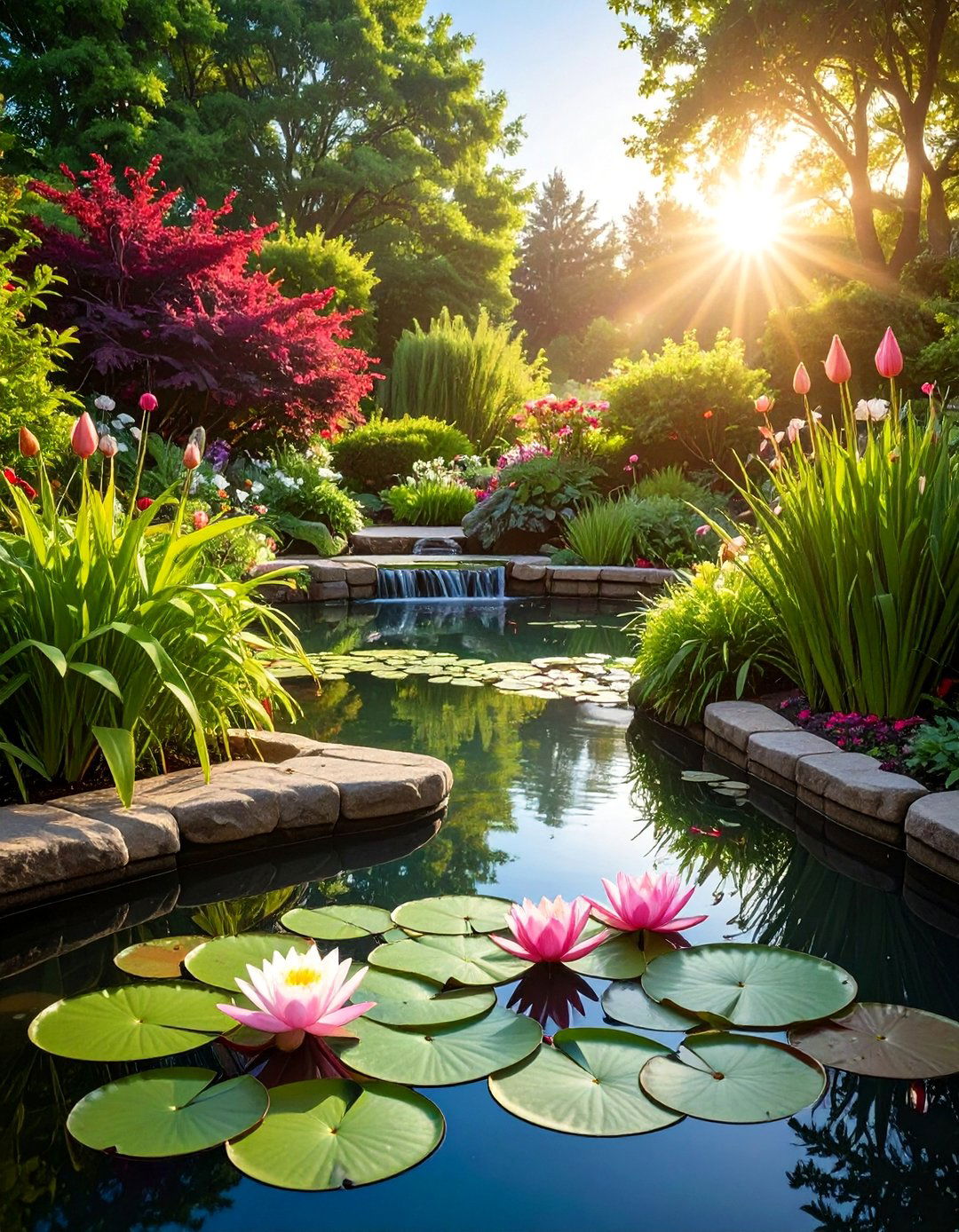
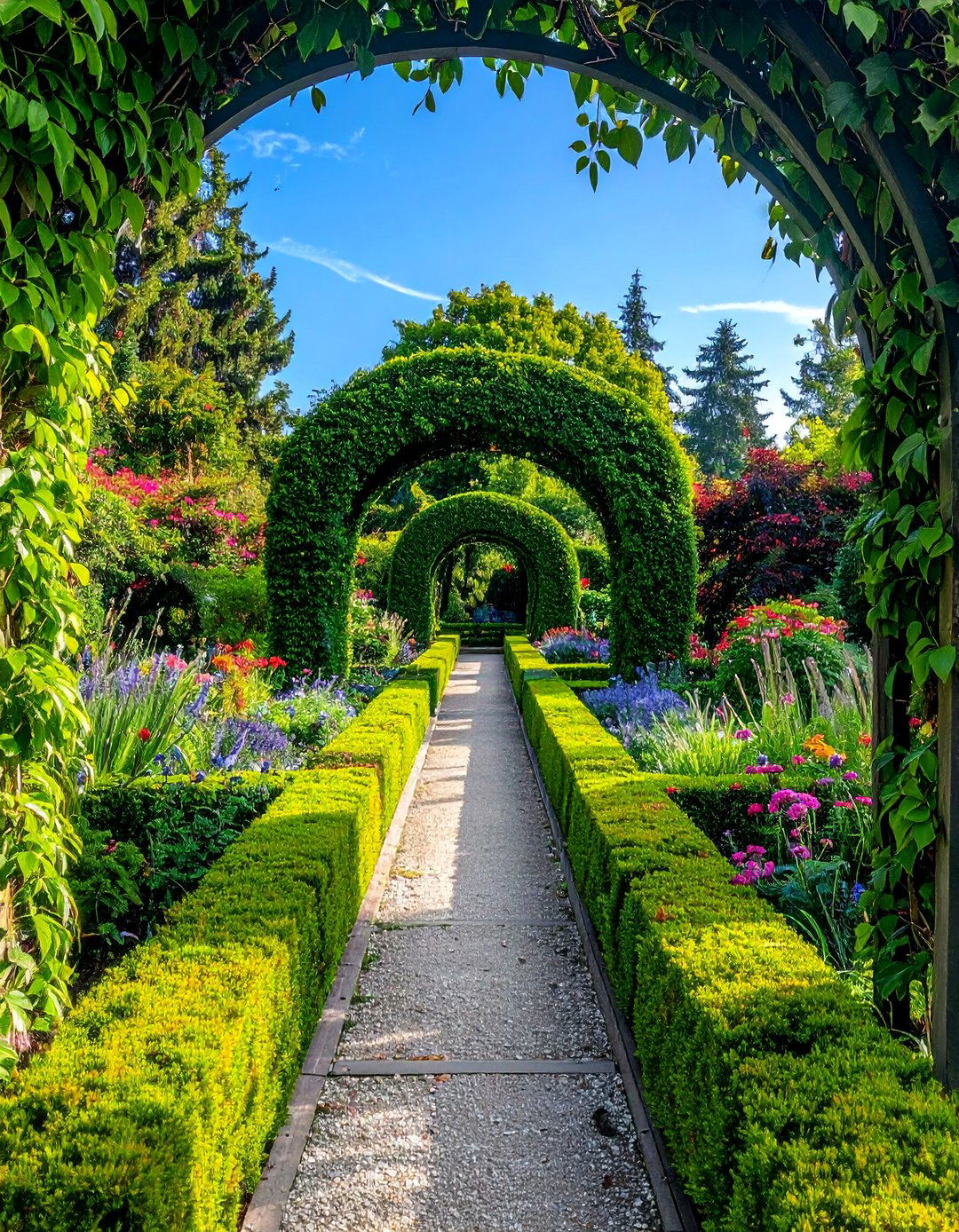
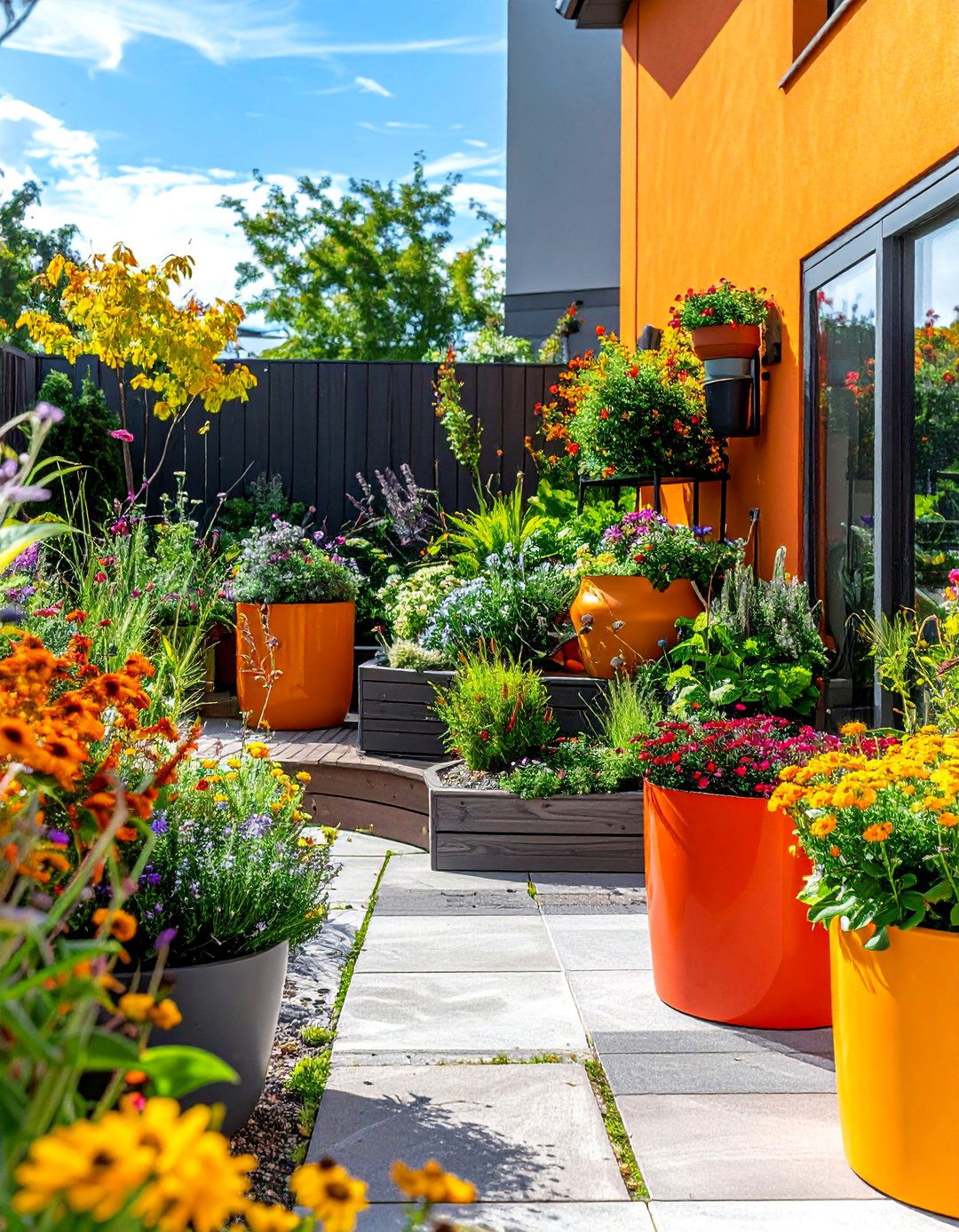
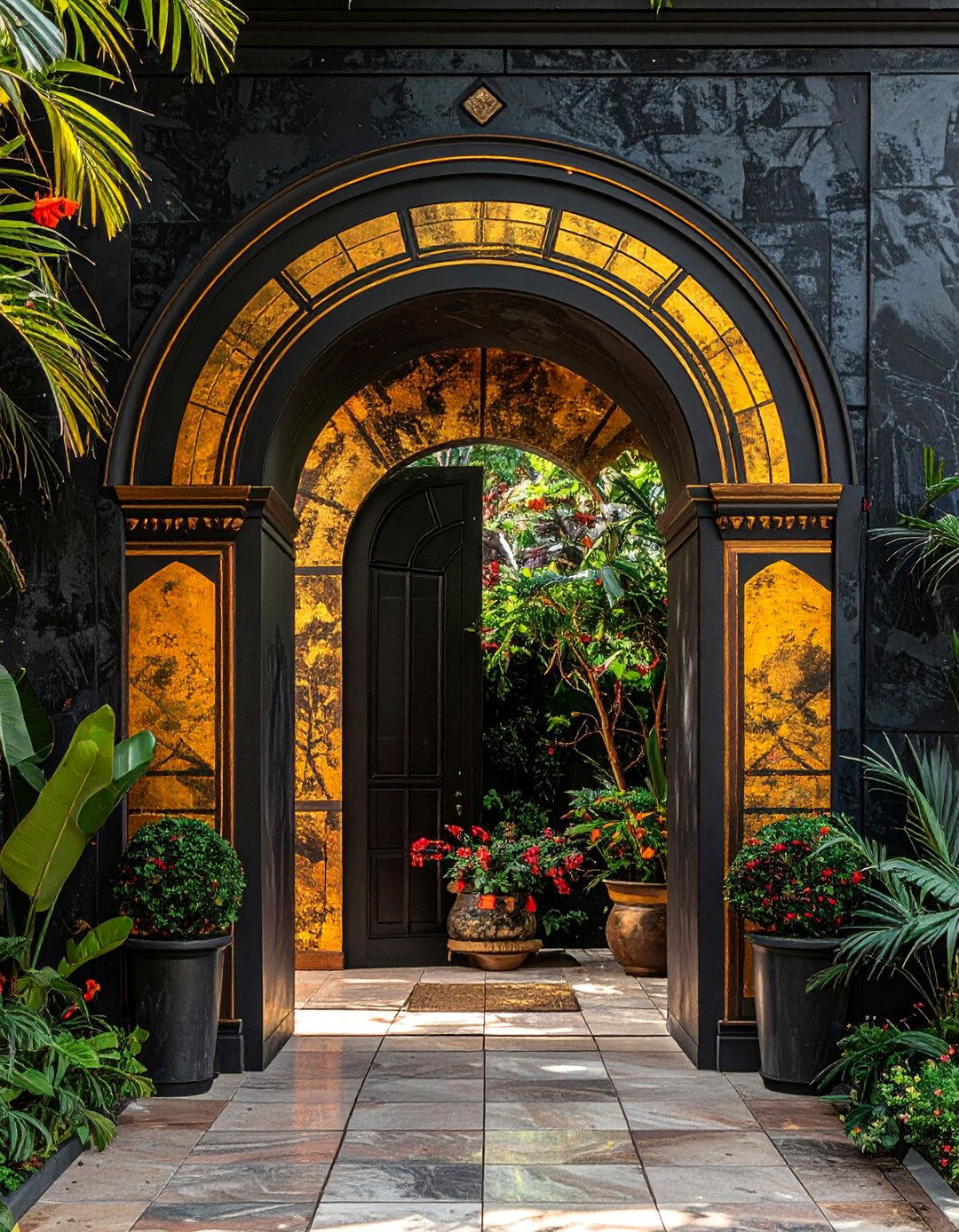
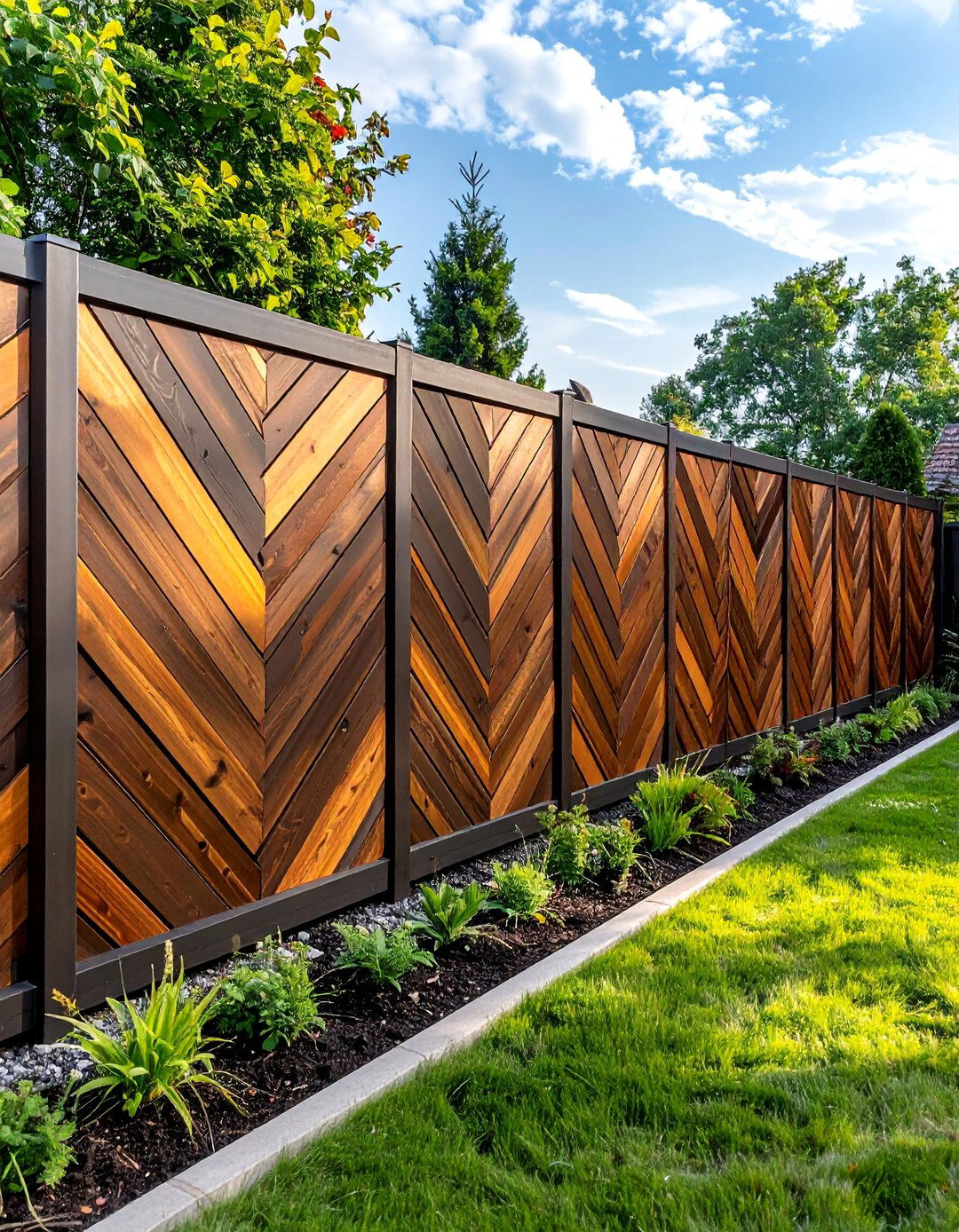
Leave a Reply